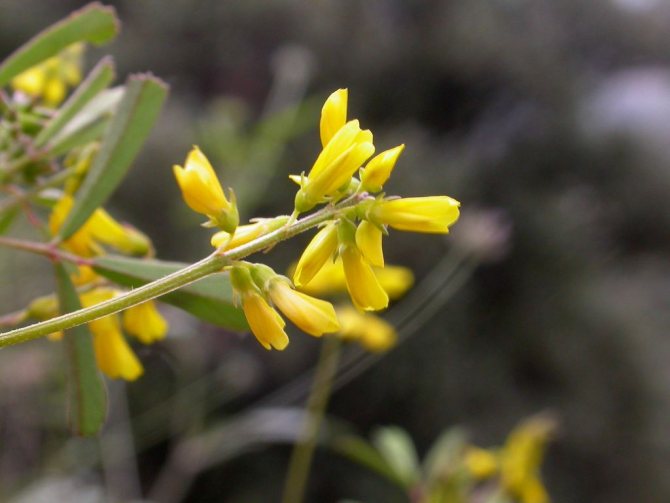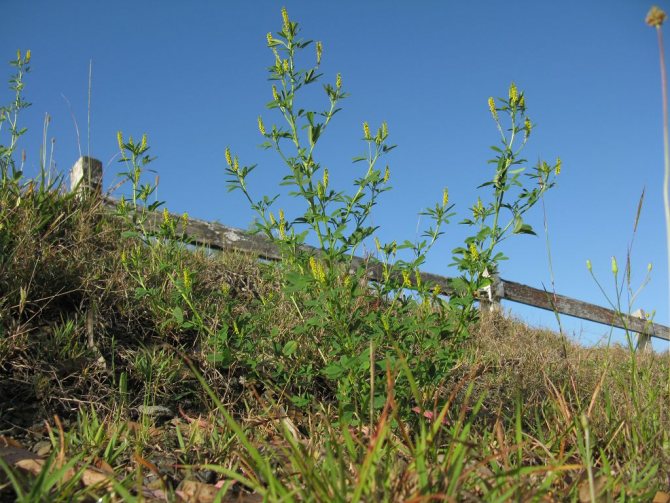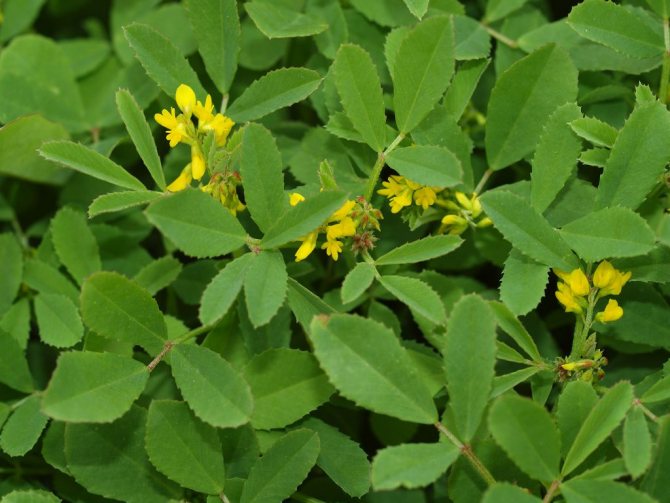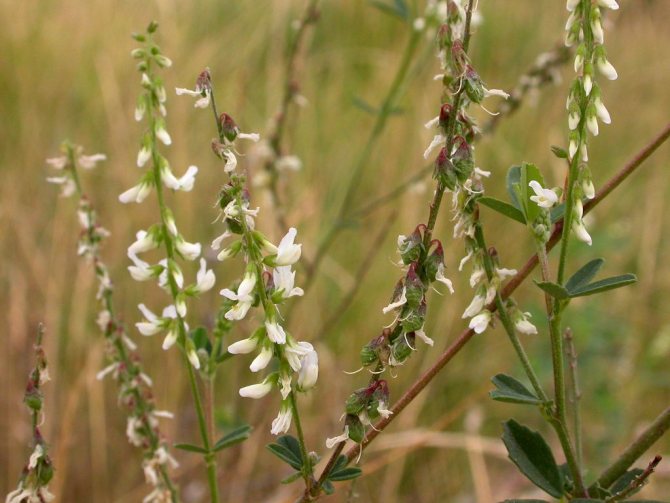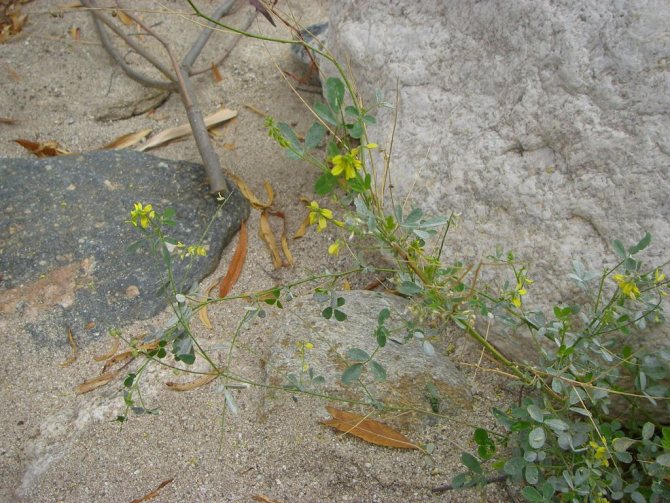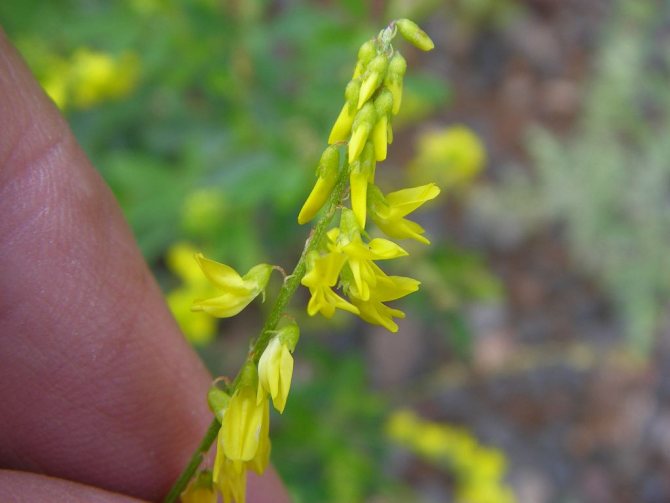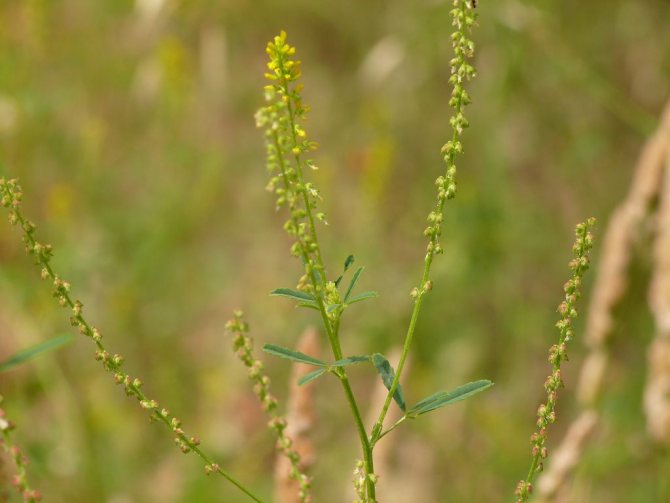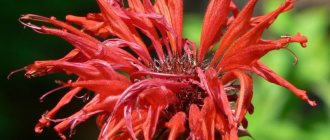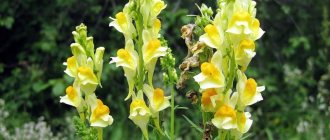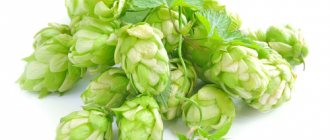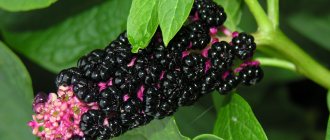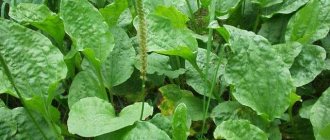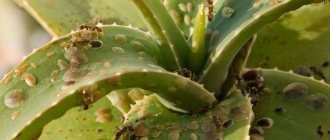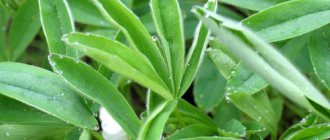Melilot is a herbaceous biennial of the Legume family. Found on all continents, but most common in Eurasia. The plant is popularly known under the names "sweet clover", "burkun", "sleepy grass", "hare chill", "soapy grass", "stable". Although it is impossible to call sweet clover exclusively decorative, it is of great benefit to the site and to the person, and is also an excellent honey plant. Thanks to this, it is worth sowing it on the site at least once every few years.
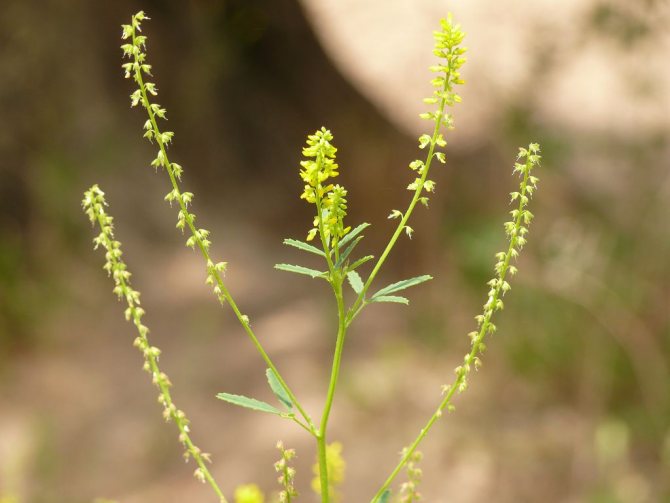
Botanical description
The medicinal herb sweet clover is a shrub plant about a meter high. Belongs to the legume family. You can recognize it by its powerful bare stem and oblong jagged leaves of a rich green hue. At the base of each stem, there are yellow flowers, collected in small inflorescences.
A distinctive feature is a pronounced aroma, reminiscent of the smell of freshly mown hay. What is so remarkable about the sweet clover? The grass tolerates frost well and feels great on arid soils, ravines, pastures, forest edges and mountain slopes. Therefore, its habitat is quite extensive: from the North to the Far East. Often, a shrub weed is found among grain crops, causing a lot of trouble for summer residents.


Care features
In leaving, the grass is not whimsical. Choosing the right location is crucial. The plant needs a lot of light. It tolerates strong heat and frost equally well, so it does not need shelter.
The soil for planting can be heavy clay, sandy or stony. Even on salted soil, sweet clover will grow. However, he will not survive on acidic and flooded lands. It also adapts well to limestone. Before planting, the soil is fertilized with a small amount of organic matter. More fertilizer will not be needed.
Plants are drought tolerant, so they usually don't need watering. Only in the absence of precipitation for a long time, when the soil is strongly cracked, can the plantings be watered by sprinkling.
In autumn, the entire above-ground part dries up and dies off. A well-developed, long rhizome is preserved underground. Already in early spring, new shoots appear from the buds of renewal. If there is too much water from the melted snow, the shoots can rot.
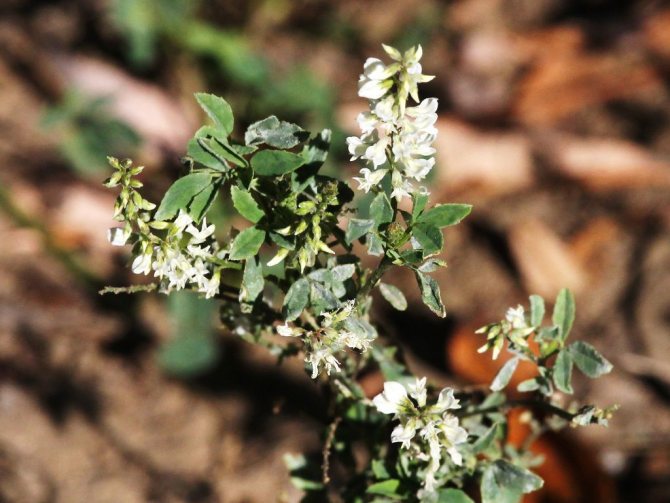

When melilot is used as a green manure, fodder and medicinal crop, it is cut at the budding stage. To increase the green mass, it is recommended to prune the roots with a special cultivator. Then it will develop better and be more nutritious.
Collection and procurement
The plant should be plucked during the period of active flowering, or rather, from July to October-month. For harvesting, it is better to choose dry weather, since a wet plant does not dry out well and begins to rot during storage, and such raw materials are unsuitable for medicinal purposes.
It is better to collect side shoots with tops, although the leaves also contain a lot of valuable elements. Then it is necessary to lay out the grass on a cloth or paper base and dry thoroughly in the attic or in a well-ventilated area. During the drying process, the raw material should be turned over so that it does not become tanned and darkened. Readiness is determined by the fragility of the stems.


Growing from seeds
Due to its short life cycle, sweet clover is propagated by seeds. They are sown directly into open ground before winter or in March-April at a temperature of 0 ... + 4 ° C. Before sowing, the seeds are soaked in warm water for 2-4 hours to soften the skin. For better germination, scarification is also carried out.
For sowing, holes are prepared with a depth of 1.5-2 cm at a distance of 50-60 cm. Seeds are scattered by hand or using agricultural machinery. Seed consumption rate: 200-250 g / are. Seedlings appear in 10-15 days. When the seedlings grow a few true leaves, they are weeded, increasing the distance between the plants to 30 cm. In the first year, flowering begins towards the end of summer, so the fruits do not ripen. It is not so abundant.
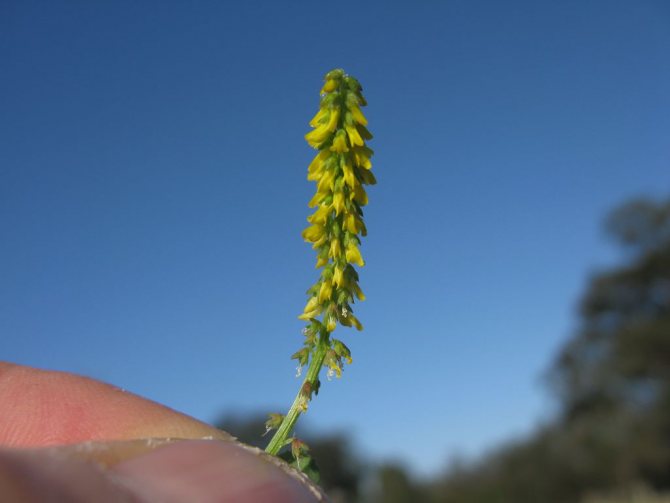

Melilot grass: useful properties and components
The plant has a rich composition, it is for this reason that it is used to treat numerous diseases. The substance coumarin, present in the grass, gives the characteristic aroma of hay, and also has a beneficial effect on the vital activity of the internal organs. It improves blood flow, blood pressure and brain activity. When coumarin decays, an equally valuable substance is produced - dicumarin, which thins the blood, preventing the formation of blood clots.
The plant exhibits bactericidal and astringent effects due to the presence of tannins. And the mucous substances contained in the grass have a softening and enveloping effect. There are also resins in the composition, from which pharmaceutical companies make bactericidal plasters and medicinal infusions. Melilot grass, the properties of which are due to the content of saponins, has a tonic, diaphoretic, anti-inflammatory and diuretic effect.
The plant contains a lot of ascorbic acid, protein, starch, fatty oils, vitamin E, cholil and flavonoids. All of these elements and vitamins enhance the healing properties and help fight various ailments. It is not for nothing that folk healers highly esteem this herb and use it as a sedative, wound healing, antiseptic and pain reliever. However, it should be remembered that the plant is poisonous. Therefore, uncontrolled reception is fraught with trouble.
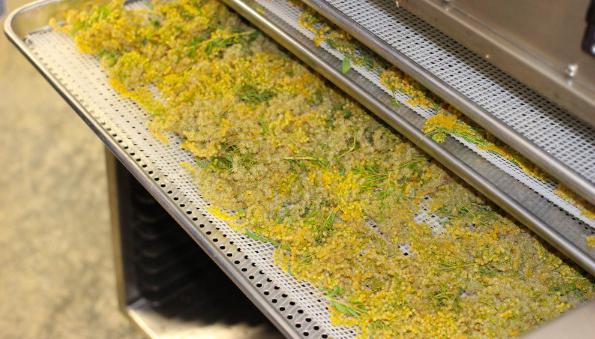

Economic use
Donnik is of great benefit to the site. It is an excellent green fertilizer. During decomposition, the overripe biomass provides the soil with a large amount of nitrogen compounds and other nutrients. At the same time, a strong and long root penetrates into the depths and loosens well even knocked down clods and dense clay.
The land becomes looser and more fertile. On sandy loams and light soils, rhizomes, on the contrary, have a binding effect and prevent erosion. If you do not cut the shoots, they will hold the snow. An additional benefit of melilot is its ability to fight root rot, wireworms and nematodes. Also, its smell scares away rodents.
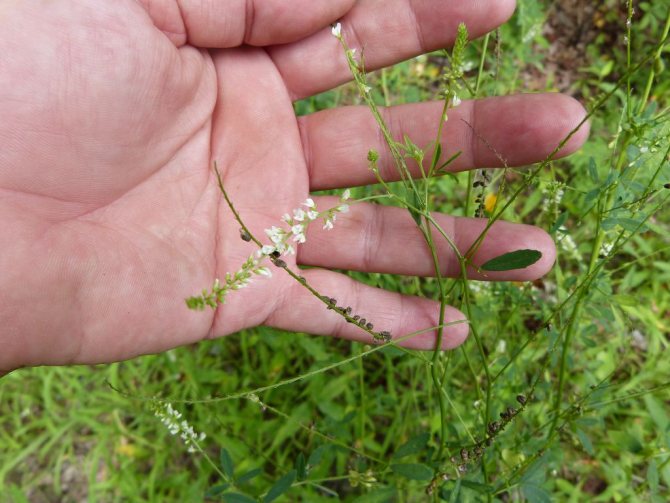

Fresh grass and hay obtained from cut sweet clover contains a lot of nutrients. The plant can easily compete with alfalfa or clover. Unfortunately, as they grow, the stems accumulate a large amount of coumarins, and they also become very tough. Therefore, the preparation of fodder is carried out at the budding stage. Melilot is recommended to be combined with other plants. It increases the amount of milk and body fat in animals.
Culture plays an important role as a honey plant. The most effective sweet clover is white. During the flowering period, bees collect nectar in an amount of 1.5-2 c / ha.
Melilot honey has a whitish, amber color and intense aroma. It is used not only as a tasty supplement, but also for treatment. The use of the product increases lactation in lactating women. It is also taken as an antispasmodic, diuretic, anti-inflammatory agent.It relieves pain, relieves hypertension, respiratory tract spasms. It is also used externally, applying compresses to the chest with mastitis.


Use in traditional medicine
Not only traditional medicine is practicing the use of this plant. Modern pharmaceuticals also use raw materials for the production of herbal medicines and preparations. The therapeutic effect of infusions and decoctions of this plant has been repeatedly proven. Sweet clover herb, as noted above, is an excellent expectorant, diuretic and antibacterial agent.
It is often used as a mild laxative and carminative. A valuable extract (biogenic stimulator) is obtained from the plant, which is characterized by a wound-healing effect. Shown are preparations based on clover for leukopenia, seizures, migraine, respiratory pathologies and insomnia.
The substance coumarin improves memory, attention, strengthens the heart muscle, and also treats (in combination) gout, genitourinary disorders and diseases of the musculoskeletal system.
Medicinal properties
Melilot is rich in coumarins, essential oils, resins, mucus, tannins. It is actively used in folk medicine. For medicinal purposes, flowers and the upper part of the shoots with leaves are used. They are cut and dried, then rubbed with hands, and the tough stems are removed. The resulting raw materials are stored in paper envelopes for up to 2 years. It has a strong, dense aroma and a bitter taste.
Ointments, decoctions and alcoholic infusions are made from dry herbs. Decoctions and tinctures are taken orally to treat insomnia, headaches, hypertension, bronchitis, flatulence and cystitis. Compresses from decoctions are applied for mastitis, radiculitis, stretching, hemorrhoids, inflammatory processes and wounds on the skin. The flower ointment helps relieve joint pain.
Melilot treatment has contraindications. First of all, everyone, without exception, should not increase the dosage, since coumarins can have a negative effect on health. As a result, dizziness, insomnia, and headache appear. Also, sweet clover is contraindicated for internal bleeding and liver disease.
Traditional medicine recommends ...
Most people prefer herbal preparations, considering them the safest and most effective. Among the popular medicinal plants in the first place is the sweet clover herb. The use is recommended by experienced healers for hormonal imbalance, menopause, diseases of the female reproductive system.
Infusions help to normalize the menstrual cycle, relieve debilitating pain and PMS. They use solutions to treat furunculosis, inflammation and wounds: they make compresses, wraps, lotions, add to the bath. These treatments help speed up the healing process and soften the skin. The only thing to remember when using the plant is that it is poisonous and can harm the body if the correct dosage is not followed.
Appearance and internal content
Sweet clover has other names - burkun, wild buckwheat, Italian grass, burkunets. If you hear them, then know that they all belong to the same plant, widespread in continental Europe, the British Isles, North and South America, Central and Central Asia, and even New Zealand. He probably met you along roads and rural fences, in meadows and fields, wastelands and glades.
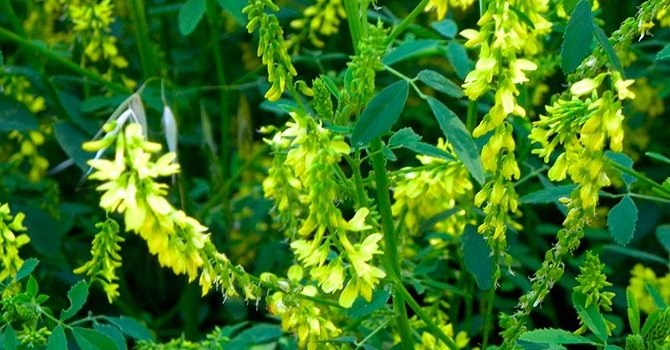

Straight branching stem with oblong trifoliate leaves can reach a height of two meters. The plant blooms throughout the summer with small yellow or white flowers, collected in dense brushes at the tops of the stems. The herb contains valuable components, thanks to which sweet clover is widely used in herbal medicine:
- coumarin;
- tannins;
- coumaric and melilic acid;
- carotene;
- essential oil;
- vitamins C, E;
- dicumarol.
Effective recipes
1. It is not difficult to prepare a medicinal decoction on your own. This will require 400 ml of cold water and ten grams of herb. Pour the solution into a thermos and leave for half an hour. Take with high pressure, neurosis, fatigue, insomnia and migraine, one hundred grams twice a day.
2. For similar disorders, you can make the following infusion: pour five grams of the plant (preferably crushed) with a glass of warm water, leave for about two hours and drink ¼ glass before bedtime.
3. Medicinal sweet clover will help to cope with flatulence. Grass (dry) in the amount of five grams is poured with boiling water (200 ml) and boiled for ten minutes. Cool the broth, strain and use a tablespoon three times a day.
Where else is sweet clover used?
Dried herb, with its moderately pungent, bitter-salty taste, is used as a flavoring agent in cooking and as a perfume for snuff. It is added to the first and second courses, sauces, alcoholic beverages, tea, compote and kvass.


Fresh leaves are cut into green salads, cold and hot soups. In the old days, the plant was able to process clay and wooden containers for storing milk, pickling tomatoes and cucumbers, cabbage sourdough.
Melilot, due to its ubiquitous growth, is often found in pastures for livestock. When preparing fodder for the winter, he, together with vetch (peas), makes hay fragrant and nutritious. Both plants belong to the same family, grow side by side and are similar in appearance.


Special attention should be paid to the storage of such hay, since its decay can cause poisoning and death of livestock from internal hemorrhages due to an excess of dicumarins.
In general, any plant can be both a medicine and a poison. The question is in the dosage and method of administration.
Infusions
1. Apply the drug for colds. When a strong cough appears, such an infusion is prepared: stir 20 grams of the plant in a glass of water and warm it up in a water bath for 15 minutes. Then add a similar amount of liquid, strain and drink half a glass twice a day. Store the solution in the refrigerator for no more than two days.
2. In case of nervous disorders, a drug is used, for the preparation of which you will need the herb yellow sweet clover (10 g) and boiled water in the amount of two tablespoons. Insist for several hours, strain and take 70 g four times a day.
3. For bronchitis and cystitis: pour the chopped leaves (large spoon) with boiling water (glass). For four hours, insist, strain and drink 50 ml three times a day.
Growing
Agrotechnics
Melilotus officinalis is a mesoxerophytic plant of the steppe and forest-steppe zones; rises to the middle mountain belt, rarely - almost to the subalpine. Thanks to a well-developed root system, penetrating to a depth of 2 m, it can extract water from deep soil horizons. Drought-resistant and cold-resistant. It grows well on chernozems, chestnut, sod-podzolic and gray forest soils, but it can also settle on low-humus, stony, loamy and sandy soils. Poorly tolerates excess moisture.
In natural vegetation, it occurs sparsely, more often in disturbed areas, in dry and steppe meadows (sometimes solonetzic). It grows scattered in the steppes, sparse light forests, along forest edges, dry slopes of ravines and ravines. It is not a specific weed, sometimes it even becomes a malicious weed. Most often found in pairs, it is a part of the eastern-bluegrass-wormwood and wormwood-bluegrass groups of fallow vegetation. On young deposits, it sometimes forms thickets with an area of several tens and even hundreds of hectares. It is often found in forest belts, especially young ones, on wastelands and along roadsides.


Medicinal sweet clover. Teberda reserve.On fallows and steppe slopes, 1300-1900 m above sea level.
Reproduction
Propagated by seeds. A good development of melilot is observed with a sufficient amount of spring precipitation, contributing to the germination of its seeds and the rooting of seedlings. In the first year of life, it develops only green mass and a root system that dies off in the fall. The root collar overwinters with renewal buds capable of tolerating frosts down to -48 ° even in snowless winters (9). In the second year, the growth of sweet clover begins in early spring. Flowering is extended, lasts about 2 months.
Varieties
Together with sweet clover, other types of clover are often found. About 20 species of this plant are known. 11 grows in Russia.
Along with the medicinal sweet clover, the tall melilot - Melilotus altissimus Thuill was also allowed for use in scientific medicine. It is a biennial plant with a thick taproot. Pods vaguely reticulate-wrinkled due to the presence of anastomosing veins, drooping, with sparse hairs, ovate-rhombic, compressed along the ventral suture, with 1-2 seeds. Tepals falling at fruit; flowers are yellow, large, up to 7 mm long, pubescent calyx. Stipules whole, subulate; brushes are dense, multi-flowered.
Sweet melilot has a European type of area. B is found mainly in Ukraine (Sredne-Dnieper, Upper Dnestrovsky and Carpathian floristic regions) and in Moldova. In Russia, it is noted as an invasive plant in a number of areas of the Volga region, in the vicinity of St. Petersburg and Barnaul. Grows in wet meadows and pastures, in areas with disturbed sod cover. Due to the rare distribution, it is almost never harvested.
Not used in scientific medicine. White melilot — Melilotus albus Medik. differs in white flowers and solid subulate stipules. Toothed melilot - M. dentatus Pers. has small pale yellow flowers, narrow lanceolate, widened at the base, and notched-toothed stipules. To the east of the Yenisei, sweet clover is replaced by sweet clover - M. suaveolens Ledeb. It is distinguished by light yellow flowers, smaller, indistinctly reticulated pods, and a stronger aroma.
Varieties
Ointments
1. If you are tormented by abscesses or sore joints, then a healing ointment from dried flowers of yellow melilot (50 g) and butter (two tablespoons) will help to cope with these ailments. Connect both components and lubricate sore spots.
2. A set of medicinal plants will help with hemorrhoids: sweet clover grass (dessert spoon), highlander (5 g), lush carnation (10 g), multi-colored carnation (two spoons). Grind all these components in a coffee grinder, take 20 grams of powder from the resulting collection, mix with melted goose or lard and evaporate in a water bath for 3-4 hours.
3. For varicose veins: pour two tablespoons of sweet clover with a glass of water (hot), cook the mixture until it decreases several times, and then filter. Combine half of the drug with two parts of petroleum jelly and lanolin. The ointment is ready to use.
Types of sweet clover
The genus of sweet clover cannot be called diverse. It includes only 22 plant species.
Medicinal sweet clover (yellow). A biennial plant with a tap root forms an airy, branched shoots 100-150 cm high. It is covered with small triple lanceolate leaves. The lobes grow on thin petioles and have serrated edges. Inflorescences in the form of narrow loose brushes bloom on thin shoots. Small moth corollas are yellow. Petals surround 10 long stamens, 9 of them with accrete filaments. Depending on the climate, flowering occurs in June-September.
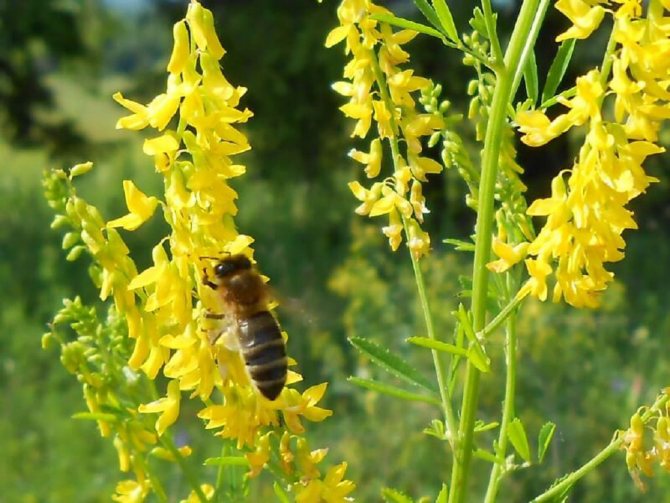

Medicinal melilot
Melilot is white. A biennial or an annual with a branched stem grows 60-170 cm in height. The shoot is covered with rare trifoliate leaves.The top is decorated with a narrow raceme with small white flowers. They bloom in the summer. In total, flowering lasts about a month, but a single flower lives up to 2 days. The plant produces a large amount of nectar and is the best honey plant in the genus.
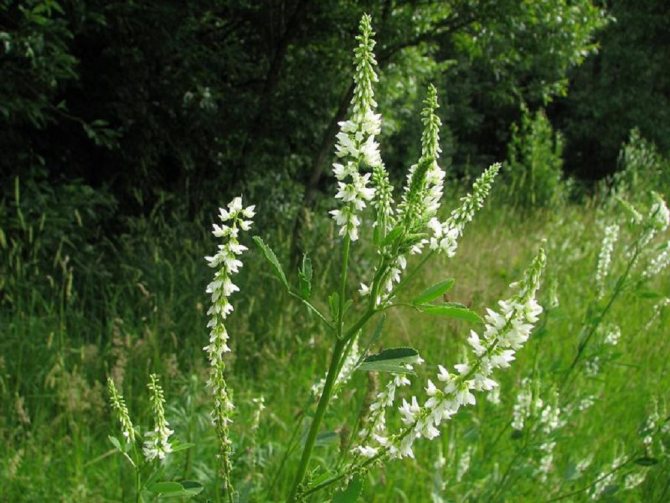

White sweet clover
Indian sweet clover. A fairly compact herbaceous annual grows 15-50 cm in height. Its stems are covered with small, obovate leaves of a dark green or bluish color. Short, loose racemes composed of yellow flowers 2-3 mm long. They bloom in the first half of summer.


Indian sweet clover
Plowed sweet clover. Annual grasses grow slightly pubescent, weakly branched shoots 15-100 cm long. The lower part of the stem gradually turns reddish. Leaves closer to the ground are larger. Together with the petiole, their length reaches 6.5 cm. The color of the foliage is bright green. In summer, loose clusters with yellow moth flowers 5-7 mm long bloom on the shoots.
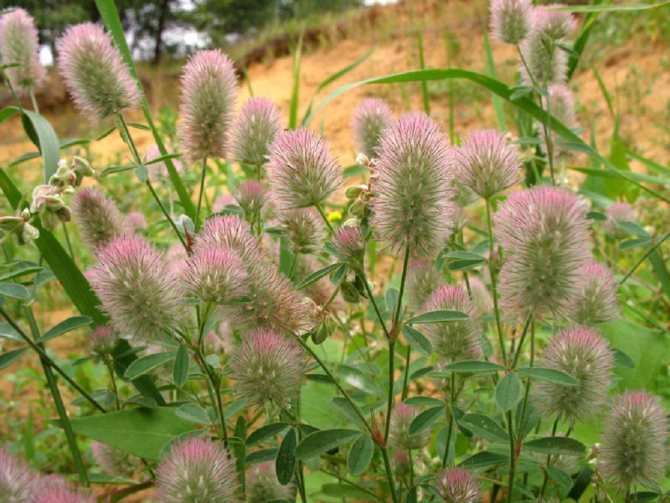

Plowed sweet clover
Poultices
1. In case of benign formation, fresh leaves of the plant should be chopped and applied to the sore spot. Such compresses can be done for purulent wounds.
2. For poultices and wraps (furunculosis, conjunctivitis, abscesses, acne): pour a glass of dry grass with a liter of water (hot), leave for half an hour and treat.
3. For the same diseases, poultices of sweet clover flowers, which are pre-steamed in boiling water, will help.
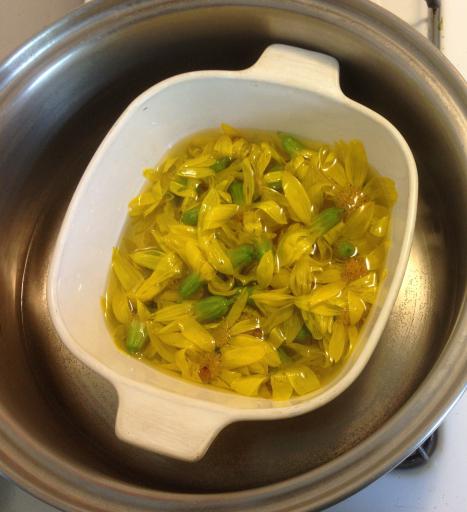

When tasty becomes healthy
Melilot honey is not just an amazingly delicious dessert, it is truly an elixir of health. It contains vitamins, micro- and macroelements necessary for our body in maximum concentration:
- iron;
- zinc;
- boron;
- chromium;
- calcium;
- folic acid;
- vitamins A, C, E, PP, group B;
- dicumarol.


Thanks to this composition, honey has unique healing properties:
- strengthens the immune system;
- increases hemoglobin;
- thins the blood;
- reduces the level of "bad" cholesterol;
- eliminates spasms of smooth muscles.
These, of course, are not all the valuable qualities of melilot honey, which it owes in full measure to the herbaceous biennial from the Legume family with a bright aroma of freshly cut hay, sweet clover. Let's get to know him better.
Herbal preparations
1. Prevent and relieve migraine such a decoction: pour a glass of boiling water over a dessert spoon of hop cones and sweet clover. Boil the raw materials for five minutes. Insist in a thermos or a sealed container for an hour and consume 50 g before meals (three times).
2. Herbal collection for adnexitis: take five grams of oregano, coltsfoot flowers, centaury umbrella and yellow sweet clover. A glass of boiling water is required for 10 g of the mixture. Leave the liquid for three hours. Strain the infusion, use 1/3 cup for about a month. During therapy, exclude sexual contact.
3. Poultice for rheumatism: pour three parts of chamomile, marshmallow and four parts of yellow melilot into a canvas bag. Pour water over the collection and boil for ten minutes. Apply to the affected area.
4. For patients suffering from pancreatitis, we recommend preparing an anti-inflammatory and antispasmodic collection of herbs. Required ingredients: one part each of the leaves of marsh calamus and thyme, two parts of calendula, plantain, chamomile, sweet clover and ash-tree, three parts each of marsh creeper and galega.
Pour five large spoons of the prepared collection with a glass of boiling water. Pour into a thermos, wrap with a thick cloth and leave for an hour and a half. Drain the liquid, and transfer the herbs to a gauze base, hold the compress for about an hour in the area of the pancreas, covering with a towel. The course of treatment is 14 days.
Application
Food use
A magnificent plant - sweet clover. Smokers added dried melilot flowers to the makhorka for smell, and the housewives steamed the pots with grass so that the milk would not turn sour.Sometimes vodka is insisted on melilot, putting a flowering plant without roots in it.
Donnik is a good honey plant. No bee land is complete without a spill of its flowers. Indeed, on a hectare of sowing of these flowers, a total of almost two billion. From 1 hectare of thickets get up to 200 - 300 kg of honey. Melilot honey is light amber in color with a delicate aromatic odor.
Melilot leaves are used as an aromatic agent in the liqueur and vodka, tobacco and perfume industries as a fixative of odors, as well as in the manufacture of green cheese. In the Caucasus, young fresh roots are eaten raw or boiled. Fresh leaves are used as a dressing in soups, salads. Dry leaves and flowers are used as a seasoning for soups, salads and compotes.
A valuable fodder plant, which is not inferior in nutritional value to alfalfa and clover, but better eaten in hay and in the form of silage. Fresh, animals eat sweet clover poorly because of the strong smell of coumarin. It is used as a green manure to enrich the soil with nitrogen. From the clover, paint is obtained. Serves as an export item.
Use in landscape design
Natural cosmetics
Medicinal use
Collection and processing of medicinal raw materials
Due to the low demand for the raw material of melilot, its harvesting is carried out in a limited amount in the black earth regions of the European part of Russia. In the forest-steppe regions of Ukraine, annual harvesting in the amount of 100-200 tons is possible, in the steppe regions - 50-70 tons. Mass harvesting can also be carried out in Bashkiria, in the low-lying regions of the Caucasus. The productivity of sweet clover is 1.5 - 3 c / ha.
The subject of the collection. Grass.
Collection and processing of raw materials. Grass is harvested during flowering, cutting off with knives or sickles the tops and side shoots up to 30 cm long without thick coarse stems.
Drying. The melilot grass is dried under an iron roof or canopies with good ventilation, spreading it on paper or cloth with a thin layer of 5-7 cm.
The quality of the finished raw materials. The raw material consists of whole leafy flowering tops and lateral branches of plants with a stem up to 3 mm in diameter and up to 30 cm long. The color of the stems, calyxes and fruits is green, the corolla of flowers are yellow.
The smell is aromatic (coumarin). Bitter taste. Humidity - no more than 14%. Total ash content - no more than 10%. Stems over 3 mm in diameter no more than 2%. The content of yellowed, browned and blackened parts of plants is not more than 2%. In the raw material, crushed particles passing through a sieve with a hole diameter of 0.5 mm are allowed - no more than 5%; organic impurities - no more than 1%; mineral impurity - no more than 0.5%.
Storage. Store in dry, well-ventilated areas on pods or racks. Shelf life. 2 years.
Application in official and traditional medicine
Melilot has anti-inflammatory, antispasmodic, hypotensive, expectorant, analgesic, wound healing properties. Melilot extract inhibits the central nervous system and has an anticonvulsant effect, promotes an increase in leukocytes in patients after radiation sickness.
Melilot herb preparations are prescribed for hypertension, ischemia, atherosclerosis, thrombophlebitis, increased blood clotting, and bronchitis.
Traditional medicine recommends infusion and decoction of sweet clover in the treatment of bronchial asthma, heart pain, inflammation of the ovaries, edema, cystitis, insomnia, migraine, flatulence, as well as an astringent and spasmodic agent.
In India it is used as an aromatic, emollient, hemostatic agent, for flatulence; in China - in fees for the treatment of epidemic encephalitis. Aboveground parts were included in the domestic pharmacopoeias of I-VIII editions. Melilot grass is used in official medicine in Germany, Austria, Poland, Romania, the Netherlands.
In homeopathy, sweet clover is used to prepare essences, used internally for menopausal ailments and psychosis on the basis of hyperemia. In folk medicine, it is prescribed as a laxative; sweet clover herb is included in the emollient preparations used for gynecological diseases. The herb infusion is prescribed as a sedative, diuretic, expectorant, antibacterial agent, for flatulence, diseases of the upper respiratory tract and lungs, hypertension, atherosclerosis, as an antihypertensive, antispasmodic, analgesic. In Azerbaijan it is used as a lactogonous.
Infusion, broth is used externally (lotions, compresses, poultices, baths, washing, ointments, plasters) - as an irritating, distracting, anti-inflammatory, cleansing, emollient, for abscesses, furunculosis, mastitis, articular rheumatism and malignant tumors. In Bulgaria, infusion and decoction are used as anticoagulants and fibrinolytic agents for chronic bronchitis, cystitis, migraine, hypertension. In Poland - with neurasthenia, heart and headaches, insomnia. In Germany, Austria - for diseases of the stomach and bronchitis, in France, the decoction is prescribed internally as an antispasmodic and astringent, in the form of baths - for gout. In Bulgaria, a tissue preparation "Meliocin" was obtained from the leaves, the biostimulating effect of which is twice as high as that of aloe extract.
Melilot grass: contraindications and side effects
The plant is poisonous, therefore, when taking it, you need to take certain precautions and do not exceed the dosage. Despite the abundance of medicinal properties, it cannot be used during the period of bearing a baby, with low pressure, pathological processes in the kidneys and liver. It is undesirable for people with poor blood clotting grass sweet clover.
The beneficial properties will be nullified if the instructions and prescriptions of the doctor are not followed. In case of overdose and prolonged use, pain in the abdomen, diarrhea, nausea and even vomiting are observed. Rapid pulse, high blood pressure and arrhythmia are also noted.
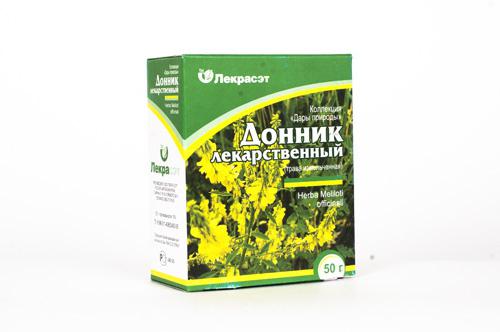

Melilot grass (the instruction warns of the presence of certain contraindications) can provoke dizziness, fatigue, apathy, weakness and drowsiness. Subcutaneous hemorrhages, an allergic reaction in the form of itching and burning are not excluded. To avoid the above-described problems and intoxication, we urge you not to neglect the elementary rules of therapy.
Melilot honey: beneficial properties
Both types of sweet clover have excellent melliferous qualities. Honey from them, produced by bees, is particularly useful.
Its inclusion in the diet is useful for pregnant and lactating women. Melilot honey provides milk flow and stable lactation, and for pregnant women it will become an irreplaceable source of beneficial trace elements and minerals.
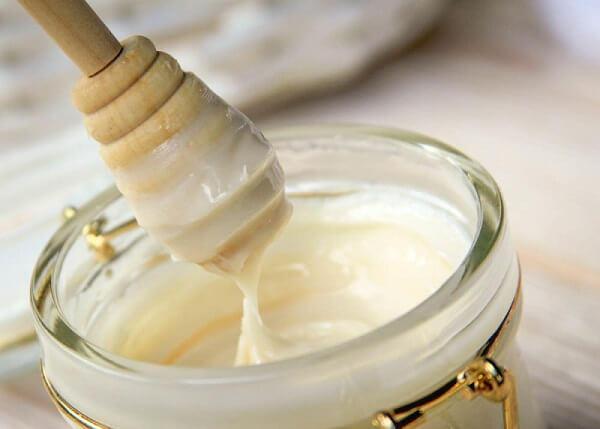

It has absorbed all the beneficial properties of the plant, therefore it is used for disorders of the central nervous system, neuralgia, insomnia. It is also recommended to include it in the diet of children and the elderly, especially during colds, when the body needs to strengthen and increase its protective properties. For diseases of the upper respiratory tract, such as coughs of various etiologies, bronchitis, pleurisy, sweet clover honey will be useful for its expectorant properties, accelerate the healing process and relieve symptoms.
Compresses are used to treat joint diseases: rheumatism, gout, arthritis, arthrosis. For maximum effect, propolis can be added to honey, in this case it will also provide rapid regeneration in case of skin injury.
Regular consumption of honey is important for men as well. It helps to increase libido, has anti-inflammatory and antibacterial effects, so it is effective during therapy for diseases of the genitourinary system: prostatitis, prostate adenoma.
Types and varieties of sweet clover. Where grows
Wild buckwheat grows in the forest-steppe and forest zone. Found in Central Asia, the Caucasus, New Zealand and America. Most of the plant species can be found in Russia and Ukraine. Buckwheat grows wild in wastelands, meadows, in quarries, on roadsides.
In traditional and folk medicine, plant raw materials of yellow or medicinal bottom grass are most often used. But besides her, there are several more varieties of this plant used in herbal medicine. It is white sweet clover (burkun grass), tall and annual. All of them belong to active melliferous plants and have healing properties.
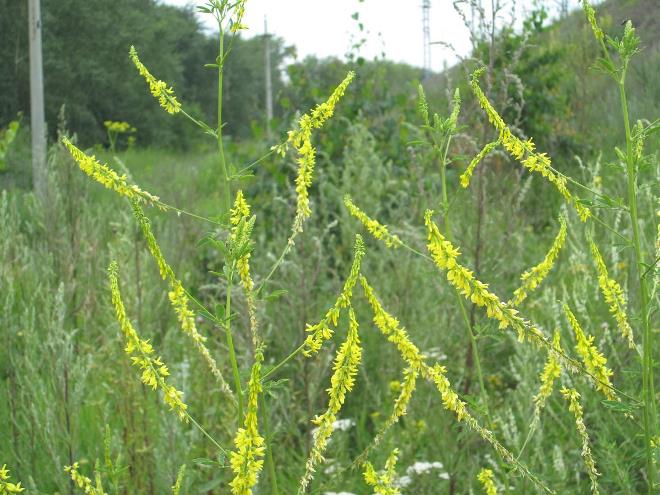

photo of a flowering plant in its natural habitat
Melilot plants are white and yellow, what is the difference
They differ in appearance, chemical composition, fruit ripening time and healing properties.
Wild buckwheat:
- has yellow flowers;
- stem height reaches 1.5 m;
- flowering period - from June to September;
- fruits begin to ripen from the beginning of August;
- it is characterized by a richer chemical composition, due to which the spectrum of medicinal properties expands.
Burkun:
- has white flowers;
- stems grow up to 2 m in height;
- flowering begins at the end of June and lasts until the end of September;
- fruits ripen in October;
- the chemical composition is dominated by coumarin and dicumarol - there are much more of these substances in white sweet clover than in yellow, therefore, the use of burkun in large doses can cause poisoning.
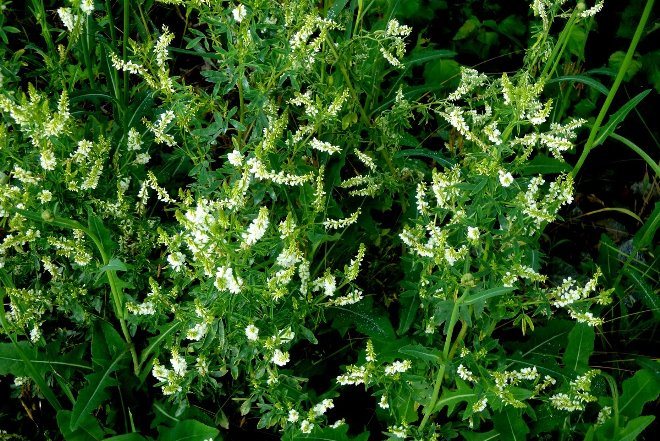

white sweet clover differs in its chemical composition and therapeutic effects from yellow
Chemical composition. Nutritional value and calorie content
The healing properties are due to coumarin. The substance has a specific aroma that attracts honey bees. In addition, the bottom grass contains:
- Ascorbic acid. Responsible for redox processes and is an immunostimulant.
- Choline (vitamin B4). Has a positive effect on liver cells.
- Saponins. They have mucolytic, sedative, diuretic and anti-sclerotic effects.
- Carotene (vitamin A). Takes part in the binding of free radicals.
- Tocopherol (vitamin E). Responsible for the process of cell regeneration.
- Dikumarol. Prevents the formation of blood clots.
- Tannins. They have anti-inflammatory, bactericidal and astringent properties.
Yellow sweet clover contains protein, fiber, resins, flavonoids, minerals, essential oils, mucus and carbohydrates. Most of the chemicals begin to show therapeutic activity after the plant has dried.
If we talk about the nutritional value of bottom grass, then 100 g of raw materials contains 0.8 g of protein and 81.5 g of carbohydrates. The same amount accounts for 309 kcal.


due to its rich chemical composition, the plant is harvested for the preparation of medicines
Where to collect, how to grow and harvest sweet clover grass
You can grow grass in your personal plot. The plant is unpretentious to weather conditions and soil conditions. Shows resistance to cold, grows in all climatic zones. Sweet clover is propagated by seeds. It is recommended to soak them for several hours before sowing. The soil is prepared in early spring. A few weeks after sowing, the first shoots already appear. The plant does not require complex care. All that is needed is to weed and water in time.
You need to collect the bottom grass during the flowering period from July to September. The inflorescences should be cut off from the top of the grass. It is recommended to harvest raw materials in dry weather. Wet grass dries for a long time and becomes moldy. This should not be allowed. Molds start the process of converting coumarin to dicumarin. According to the chemical formula, this substance is classified as a poison. In the history of animal husbandry, there have been cases of mass poisoning of livestock. Investigation revealed that improperly dried sweet clover was used as feed.
Drying is carried out in a well-ventilated place, protected from sunlight, or in dryers. The grass is laid out on sheets of paper and turned over several times during the drying process. A sign that wild buckwheat has dried up is considered a characteristic crunch when trying to break the stem. The finished plant raw materials are stored in cardboard boxes.
When harvesting the roots, they are dug out, cleaned from the ground, washed with running water and placed in a dryer.
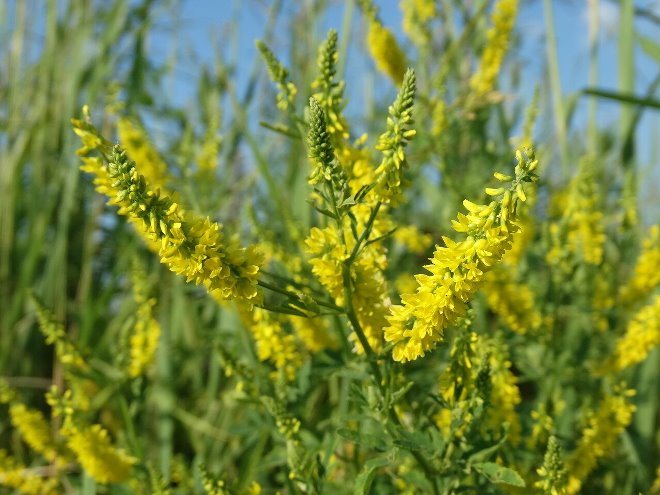

the plant is used by folk and official medicine for the treatment and prevention of various diseases
When not to take
The use of the herb, despite the large number of indications, should be careful, as there are nuances. Contraindications are as follows:
- individual intolerance to the components of sweet clover;
- kidney problems;
- hemocoagulation problems;
- hemorrhagic vasculitis;
- internal bleeding;
- tendency to bradycardia;
- hypotension;
- period of bearing a child.
Children under 18 years of age should not be allowed to grass. Contraindications to the use of the plant are absolute, which means it is forbidden to ignore them. In case of an overdose and an allergic reaction, the following side effects may develop:
- nausea;
- vomiting;
- pain syndrome in the head;
- dizziness;
- drowsiness;
- general weakness;
- tremor.
In difficult situations, such negative reactions can be observed:
- hepatic lesions;
- muscle hemorrhage;
- hemorrhages in internal organs;
- hemorrhage under the skin;
- paralysis;
- damage to the central nervous system.
It is forbidden to take herbal remedies in conjunction with drugs that lead to a decrease in coagulability.
It is important to remember that using sweet clover in large dosages, the grass becomes very poisonous.
If a surgical operation is planned, it is necessary to stop using the plant 30 days in advance: problems may occur.


Aspirin and other anticoagulants are strictly forbidden to combine with sweet clover
What are the characteristics of real sweet clover honey?
Buying any product, a person hopes to get it of high quality and fully consistent with the brand that the seller claims. When we are trying to choose honey from a variety of jars on the market, in most cases we hope for the honesty and decency of the seller: after all, quite often this product is purchased for treatment, which means that it is very important that the varieties of honey correspond to the declared ones.
For example, it is easy to confuse melilot honey with rapeseed. How to distinguish this nectar from a fake or low-quality product? The benefits of these products vary. Moreover, rapeseed honey is much cheaper.
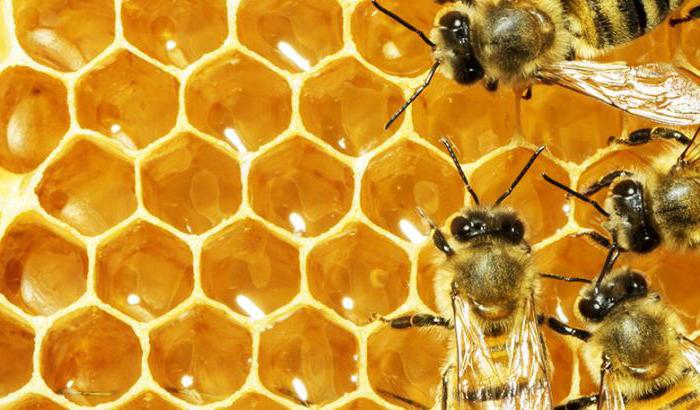

You need to know that this variety has a very subtle, light, and not persistent and rich vanilla aroma. It is this indicator that is decisive when choosing.
Pay attention to the consistency of the product: it must be uniform. If the density of honey is uneven, it means that it was drowned or different varieties were mixed.
What does yellow sweet clover look like?
In Russia, the plant is found in the European and Asian territories, in all regions, with a suitable climate. It is a bushy plant up to 1.5-2.0 m with a bare, branched stem, a well-developed taproot. Melilot yellow belongs to the group of biennial plants. Blooms in the second year (blooms from June to August).
The flowers of the medicinal sweet clover are yellow, moth-shaped, collected in a spike-shaped brush, have a strong aroma, which is also popularly called the smell of freshly cut grass. It is easy to distinguish it not only by the inflorescences, but also by the leaves. The leaves are trifoliate - three leaves on a common petiole, have stipules.
Sweet clover honey
Since this plant has many medicinal properties, making honey from it is just a godsend for the prevention of diseases and maintaining the body in good shape. It has analgesic, anti-inflammatory and antispasmodic effects.
Honey will restore strength after serious illness and prevent all sorts of relapses. Relieve regular migraines and dizziness. And the pleasant aroma and taste will bring pleasure when using it.
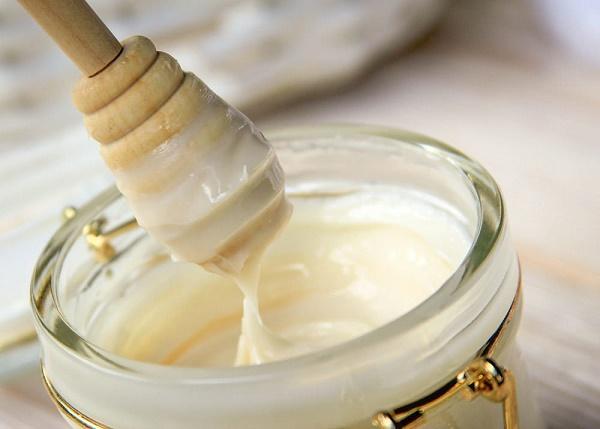

Description
Melilot yellow - a plant with a two-year life cycle. During the first year, a stem grows without flowers and fruits, which dies off by winter. In spring, flowering and fruiting stems grow from the root collar.
The stem of the plant is straight, branched up to 15o cm in height. Small flowers on elongated peduncles are combined into hanging axillary inflorescences. Belongs to the legume family. The fruit of the sweet clover is an ovoid gray bean with a pointed tip.
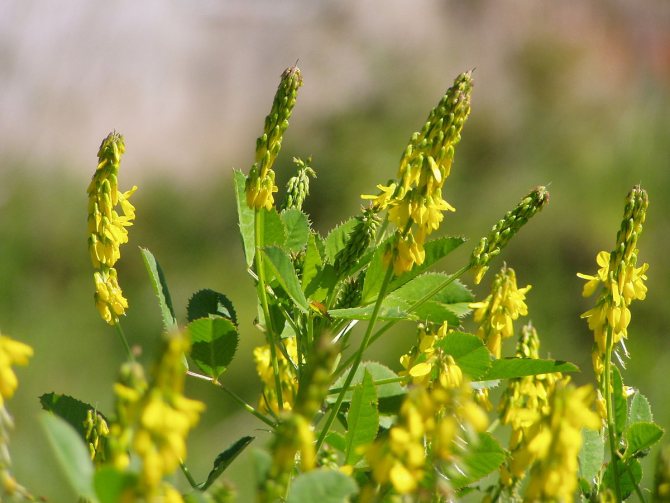

Melilot yellow - legume family
Features of a medicinal plant
Melilot yellow grows in the wild. It is a good fodder plant, a green soil fertilizer and a quality honey plant. Recently, its healing properties are more and more appreciated, therefore in some countries it is cultivated, new varieties are being developed.
Area
It is a medicinal plant of the steppe and forest-steppe zone. Distributed throughout the European part. Loves the southern regions, Minor, Central Asia, the Caucasus. In Russia, it can be found even in Western Siberia. Most types of sweet clover grow in Ukraine. Also, this plant can be found in North and South America, New Zealand.
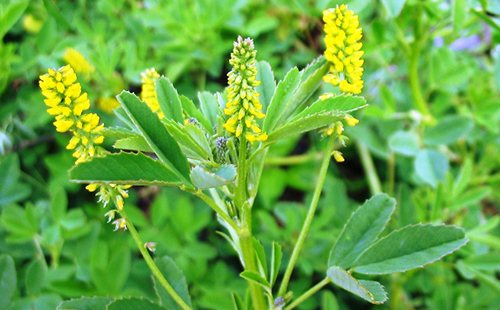

Botanical characteristics of sweet clover
It is a biennial herb. Differs in a branched, erect stem. Its height can reach from 50 to 150 cm. Leaves with a serrated edge, trifoliate. The plant is easily recognizable by its characteristic bright yellow flowers, which are collected in thin clusters in the form of spikelets. Donets exudes the aroma of coumarin, it can be described as "the smell of freshly cut grass."
Other types
There are three more types of this plant that are used in folk medicine and beekeeping.
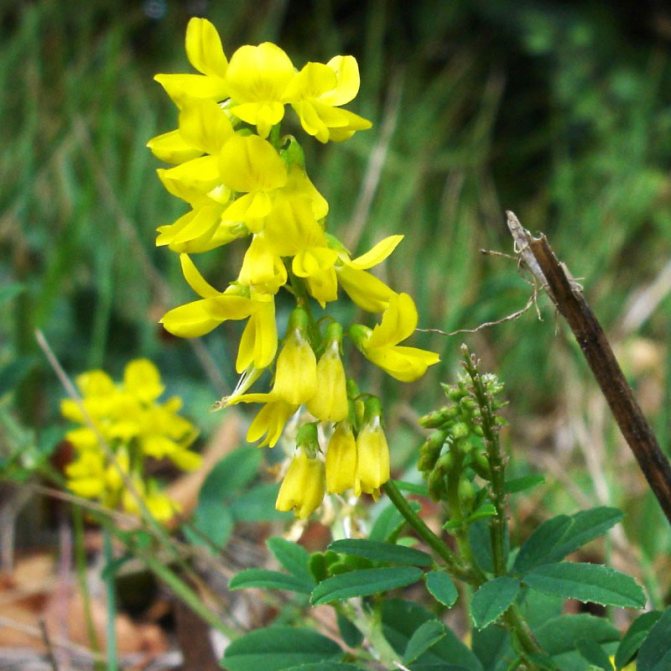

Melilot is tall, or tall.
Melilot is tall, or tall. This kind outwardly almost does not differ from the yellow melilot. The distribution area is the same. It can be seen in the European part, especially in Ukraine. In folk medicine, it is used in the same way as medicinal sweet clover.
- Melilot is white. This is a famous honey plant. Its herb is rarely used for medicinal purposes, and the medicinal properties of this species are much lower. White and yellow melilot often grow together and form dense thickets.
- Annual sweet clover. "Newbie" in our climatic zone. The plant was bred in the USA. First of all, it is a valuable honey plant. The plant is unpretentious, takes root in arid regions, blooms in the first year after sowing.
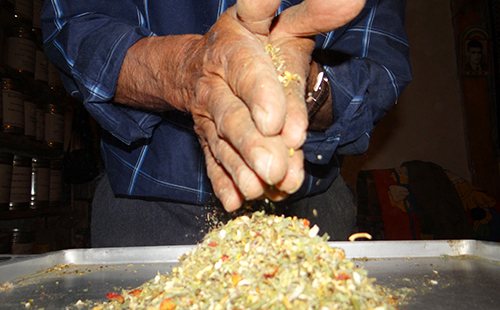

Procurement of raw materials
To preserve the beneficial properties of the sweet clover, you need to know about the rules for the procurement of raw materials.
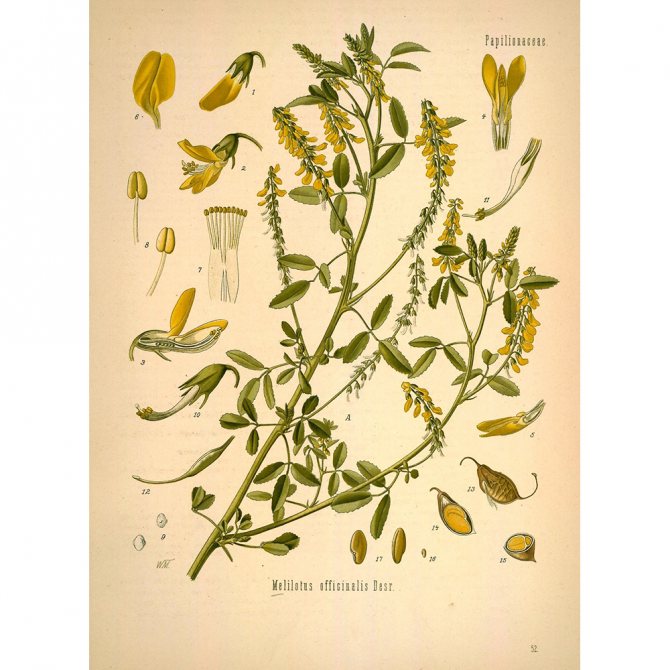

Medicinal sweet clover. Botanical illustration from Köhler's Medizinal-Pflanzen, 1887.
Collection. For medicinal purposes, only the upper part of the plant is used, along with flowers and leaves, side shoots. Harvesting begins during the flowering period. Depending on the region, from early June to September.
- Drying. Raw materials are laid out in a thin layer, dried under awnings, in the open air, without direct sunlight. Dry grass is crushed by hand, sifted and packaged.
- Storage. You can store in linen bags, closed containers. Shelf life is 2 years.
The dried sweet clover has a fragrant, pleasant smell of cut grass. It is important to maintain storage conditions - to protect the grass from moisture. When mold appears, raw materials must not be consumed.
Healing action
What are the medicinal properties of sweet clover?
- Expectorant.
- Anticonvulsant.
- Emollient.
- Calming.
- Wound healing.
- Anticoagulant (anticoagulant).
- Pain reliever.
- Absorbent.
- Carminative.
- Anti-inflammatory.
- Distracting.
What's in the chemical composition?
- Coumarin, dicumarin (prevent blood clotting).
- Organic acids.
- Glycosides.
- Slime.
- Vitamins C, A.
- Essential oil.
- Flavonoids.
- Tannins.
Indications
What are the indications for the yellow clover treatment?
- Varicose veins. The herb reduces capillary permeability. The main application of sweet clover is chronic venous insufficiency, varicose veins, thrombophlebitis, hemorrhoids. Herbal medicines help relieve pain, itching, swelling, heaviness in the legs, cramps with venous insufficiency.
- External use. Compresses and lotions are used for bruises, sprains, subcutaneous hemorrhages, non-healing wounds, abscesses, boils, tumors. The remedy well stops external bleeding, relieves swelling, inflammation in the joints, pain in rheumatism, arthrosis, gout. With fluxes, it is recommended to rinse the mouth with decoctions of sweet clover.
- Respiratory system. Broths help with coughs, inflammation of the respiratory system. They are prescribed for bronchitis, tracheitis, laryngitis.
- Digestive organs. Sweet clover herb acts as a mild laxative and carminative. Helps with indigestion, relieves cramps, bloating.
- Nervous system. The remedy is known for its sedative, narcotic properties, relaxes the nervous system, helps with insomnia, neurasthenia, psychosis. They drink it for migraines, severe headaches, convulsions.
- Leukopenia (decrease in the level of leukocytes). Often the disease develops after radiation therapy for cancer. The herb helps to increase leukocytes.
- For women. Nursing mothers apply compresses for inflammation of the mammary glands (mastitis), cracked nipples. They act as a distracting and anti-inflammatory agent. Also, the herb normalizes the menstrual cycle, it is used to treat ovarian inflammation. It is useful to drink with menopause - it relieves irritability, tension, normalizes sleep.
- For men. Most often, the remedy is used for prostate adenoma, which develops in men after 50 years. The herb acts as an absorbent, analgesic and anti-inflammatory agent.
Contraindications of yellow melilot: low blood coagulation, hemorrhagic diathesis (tendency to internal and external bleeding), liver disease, pregnancy, childhood. The herb is dangerous for the kidneys, for diseases of the central nervous system, mental disorders. Medical advice before using this herb is strictly required.


Diseases and pests
Medicinal sweet clover is attacked by insects and plant diseases. With improper care, most often, with increased watering, or a long rainy period, the plant becomes ill with powdery mildew, bacteriosis of the roots and other fungal infections. Treatment with fungicides in such cases should be carried out immediately. Apply Maxim, Fundazol and other drugs with a similar effect.
IMPORTANT! (click to find out)
Another dangerous disease - the yellow mosaic is not amenable to treatment and destroys all plantings of sweet clover.
Of the insects, the enemies are the red-bug, weevil, kraevik, palomen, and shield bugs. To combat them, you will need to spray the plant with insecticidal preparations. This should not be done immediately before the collection of medicinal raw materials.
To prevent insect damage, the soil is treated with insecticides, the area with the melilot is regularly weeded.
There are varieties that are resistant to a number of diseases and weevil damage.
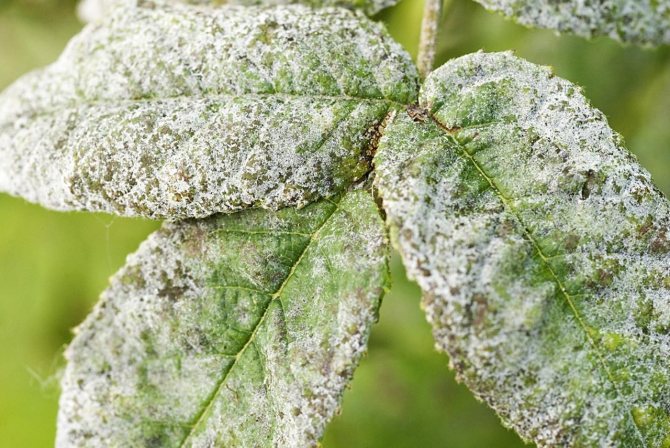

Powdery mildew is the enemy of plants
Increased lactation
Melilot honey enhances lactation. This beneficial property has been experienced by many women. To maintain and enhance the formation of breast milk, it is necessary to eat one spoonful of (dessert) honey after each feeding. The effect can be enhanced if you take honey with lactation fees, but always in a warm form.
This useful product can be taken during pregnancy, provided that it does not cause allergic reactions.


What medicinal properties does sweet clover contain?
Sweet clover is of undoubted benefit to the body.It is shown for outdoor and indoor use. The plant is used in the form of various dosage forms. In its action, it exhibits the following properties:
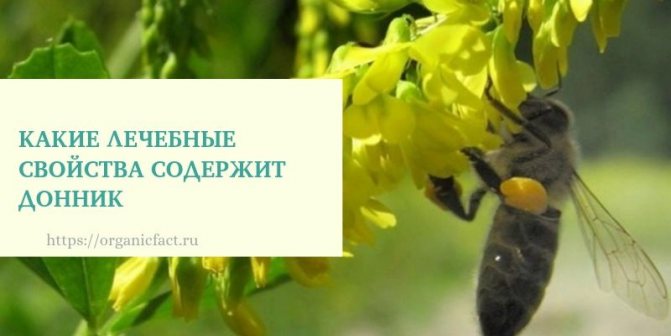

- Able to eliminate signs of inflammation. The plant promotes the healing of ulcerative surfaces, treats furunculosis, and resists the hemorrhoidal process.
- Sweet clover is able to relieve pain. Spasm or convulsions cause pain. The plant is able to eliminate them. This is due to the fact that it exhibits a pronounced antispasmodic effect. Shown Donnik for migraines and pain associated with menstruation.
- The plant has a pronounced antibacterial spectrum of action. Its use is achieved in the prevention of infection of open wound surfaces.
- Shows the ability to cough up. Under its influence, phlegm liquefies and leaves. The use of the herb eliminates cough in children.
- It is useful to use Donnik during the period of breastfeeding, since it is able to improve the quality composition of milk and leads to an increase in its amount. Pediatricians are allowed to use a decoction of this plant for nursing mothers.
- Sweet clover is able to improve the qualitative composition of blood. The plant contains substances with anticoagulant properties. The condition associated with increased blood clotting, leading to the formation of blood clots, is eliminated. The plant contains substances that can improve the blood supply to the brain.
- Melilot has a sedative effect. It manifests itself due to the presence of coumarin in it. A decoction of the medicinal herb will be useful for those who suffer from insomnia, hysteria, and nervous disorders. Its use will be effective for people undergoing panic attacks.
- Grass can be used to correct conditions characterized by a malfunction of the digestive tract. Under its influence, the amount of gases formed in the intestine decreases.
- The plant in the form of a decoction will help normalize hormonal levels, and this, in turn, will lead to the normal course of the menstrual cycle. During menopause, the plant will restore normal hormonal levels.
- Under the influence of the plant, the work of the heart muscle improves. The heart increases the frequency of the rhythm of contractions, and the blood pressure indicators become higher. A decoction of the plant improves the supply of blood to all tissue structures.
- The blood supply to the brain improves, as a result of which memory becomes stronger, attention becomes more concentrated.
It is useful to use a decoction of Donnik for those who suffer from disorders of the urine excretion system and people who have problems with the musculoskeletal system. A bandage with leaves and stems of sweet clover can be applied to sore joints.
Description of the growth of sweet clover
This plant is adapted for any soil and is unpretentious for special care. But the most comfortable for its growth is calcareous soil. Can easily tolerate dry weather, which retains its aromatic substances. Therefore, the sweet clover growing in the shade has a less intense smell. Excess moisture can gradually destroy the plant.
The first year rosette sweet clover represents only leaves and stems without flowering. The photo shows the plant at the initial stage of growth. Flowering begins in the second year of cultivation.
Melilot seeds are found in its fruits, which are grayish beans. The seeds themselves are most often yellow, as shown in the photo.
During the period when flowers appear in a plant, it is completely covered with them and becomes white or yellow in color, depending on the species. How the white and yellow sweet clover looks during the flowering period can be seen in the photo.
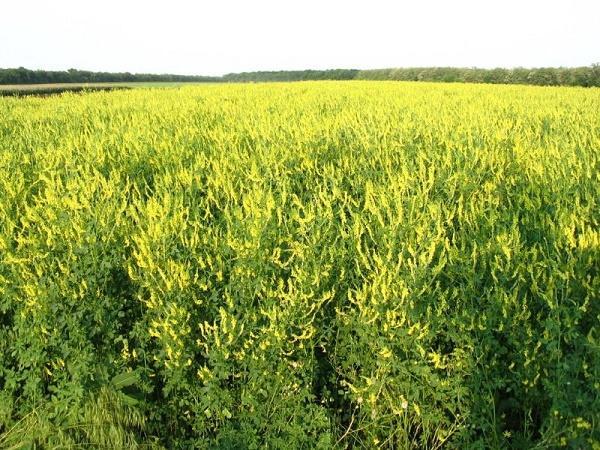

Description of the plant
It is easy to take care of the biennial, the plant has several types, it grows all over the world and, if desired, can grow in the country.
The plant is a perennial belonging to the Legumes family, the Moth subfamily. Over the years, this type of cultivated plant has grown to several dozen subspecies, but the most demanded in alternative medicine are yellow and white sweet clover.
A plant culture with a straight stem, reaching 0.5-2.5 m. Branches begin approximately from the middle part of the stem, foliage is alternate, collected in 3 pieces. The flowers are yellow, drooping, in multiple racemes, the size of which is 150 mm.
Fruits are beans, which consist of 1-2 seeds. Melilot yellow medicinal smells very nice. The rest of the species are odorless and should not be used in alternative medicine. The perennial has a fairly developed root rhizome, bushy stem and many small, oval, elongated, carved leaves on shortened petioles. The color begins in the summer season, the multi-flowered clusters include small flowers, about 50 mm in size. The fruits are not large.
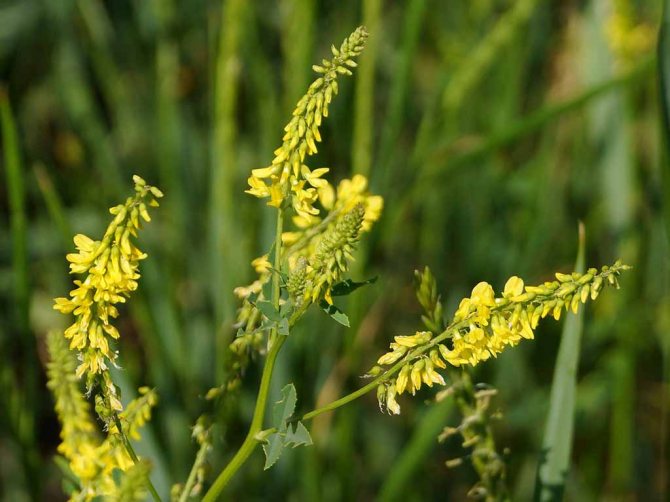

Melilot yellow
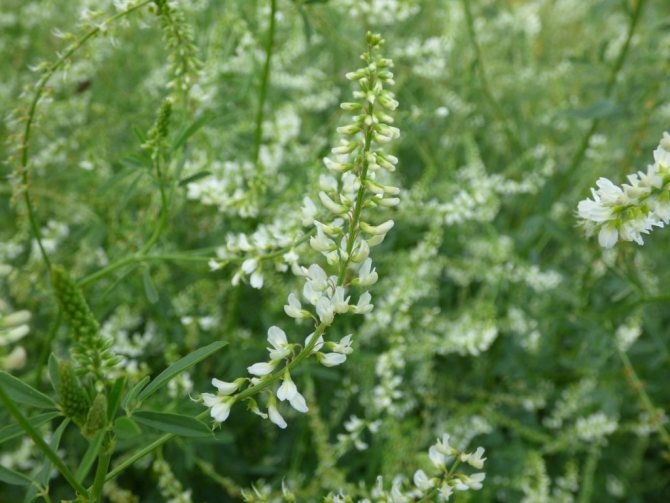

White sweet clover
Spread
Melilot yellow and its brethren are native to Europe. In Russia, it grows throughout the European part, with the exception of the Far North, in the forest-steppe and steppe places of Siberia, the Far East.
Donnik is a honey plant
A distinctive feature of the sweet clover is the presence of nectar in all weather conditions. It does not evaporate in the heat and does not dilute or wash off by rain. In beekeeping farms, sweet clover is grown to obtain a large amount of honey of high quality and valuable in all respects.
Most of the nectar is in the white sweet clover.
The honey from it has a vanilla aroma and taste. Honey from medicinal melilot has a bitter taste.
The honey of this plant is a source of energy. He also:
- raises tone;
- relieves symptoms of fatigue;
- has a diuretic effect;
- relieves spasms and pain;
- treats inflammation of the airways.
Patients with hypertension and heart problems are recommended to eat 1 tbsp. l. honey 2 times a week to improve the condition.
RECOMMENDATION! (click to find out)
Healthy people can take honey to maintain immunity and prevent various diseases.
For arthritis and arthrosis, patients are advised to massage with sweet clover honey. It cannot be done with an exacerbation of the disease and a pronounced pain effect.


Sweet clover honey has a bright aroma and is good for health.
Pharmacological properties
Preparations with the active substance coumarin are prepared from yellow melilot. It has a depressing effect on the nervous system, has an anticonvulsant and narcotic effect.
In large doses, it acts as a poison.
An indirect anticoagulant, dicumarol, prevents blood clots by reducing blood clotting. Melilot yellow - the basis for the preparation of drugs for the treatment of cardiovascular diseases.
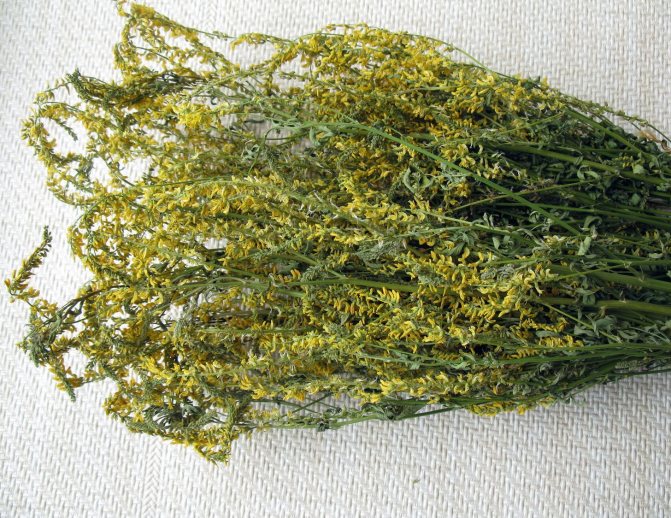

Antithrombotic effect is one of the main therapeutic properties of yellow melilot
Indications for use
The use of medicinal sweet clover for treatment is based on the properties of nutrients in its composition. Medicinal sweet clover helps with:
- colds;
- bronchitis;
- problems of the female reproductive organs;
- menstrual pain;
- asthma;
- diseases of the urinary and cardiovascular systems;
- gout and rheumatism;
- ear diseases;
- prostate adenoma;
- to increase lactation.
Melilot ointments are used for dermatological problems. A plaster with a powder of crushed leaves is applied for purulent tumors, for the treatment of abscesses, boils and acne.
IMPORTANT! (click to find out)
The active ingredients of yellow clover increase the content of leukocytes in the blood. They enhance therapy for radiation sickness. Melilot helps to improve peripheral blood supply.
Fresh young herbs are in demand in cooking and are used in soups and salads. The dried herb is used as a spice.


The medicinal plant yellow sweet clover is actively used in the treatment of diseases of the cardiovascular system
Contraindications for use
The healing properties and contraindications of yellow melilot depend on the content of nutrients in it.
It should be remembered that the main active ingredient, coumarin, if the dosage is exceeded, is poison.
Therefore, it is not recommended to ignore contraindications for taking medications with sweet clover.
- individual intolerance;
- hemorrhagic vasculitis;
- hypotension;
- bleeding, especially internal;
- congenital and chronic kidney disease;
- a history of bradycardia;
- pregnancy;
- children under 18 years of age.
Overdose and individual sensitivity is manifested
- nauseous with vomiting,
- dizziness
- headache
- loss of strength
- tremor of the hands.
It is strictly forbidden to take medicine with sweet clover and drugs that reduce blood clotting. 4 weeks before the planned medical operation, the reception of sweet clover is stopped.


For bradycardia, sweet clover is not used
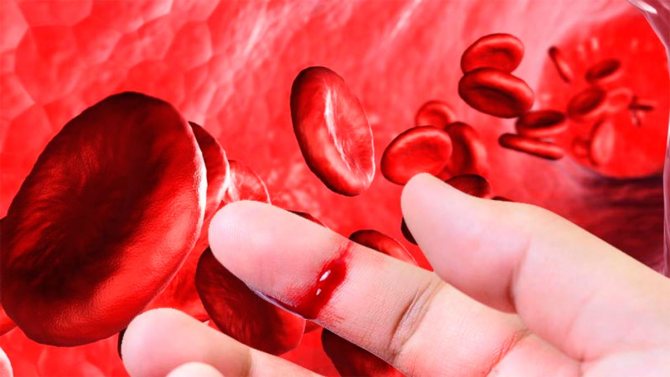

Bleeding is a contraindication for prescribing sweet clover
Contraindications for sweet clover
In large doses, it inhibits the central nervous system, adversely affects smooth muscles. With prolonged use and overdose, it causes dizziness, headaches, nausea, vomiting, drowsiness, sometimes liver damage, hemorrhages (under the skin, into muscles, internal organs) and even paralysis of the central nervous system. You can not use it during pregnancy, internal bleeding, reduced blood clotting. The therapeutic use of medicinal sweet clover is possible only for the intended purpose and under the supervision of the attending or local doctor.
Donnik is contraindicated during pregnancy. Penetrating through the placenta, dicoumarin, which is part of the plant, can cause lethal bleeding in the fetus. Poisoning is especially dangerous with a lack of vitamin K in the diet. In case of poisoning, sick animals are given feed rich in vitamin K (alfalfa, clover hay, carrots, etc.). Cattle are injected intramuscularly with 0.1-0.3 g of vitamin K and calcium-containing preparations (calcium gluconate, calcium chloride).
Contraindications
As you can see, sweet clover honey has many useful properties. And this natural product has contraindications. It should not be consumed by people who have an intolerance to one or more of its components. It is necessary to limit the use of a fragrant and sweet product for patients who are recommended to limit the intake of carbohydrates, as well as with a predisposition to allergies.
Doctors do not recommend using honey externally and for honey inhalations for bronchial asthma, tuberculosis, pulmonary sclerosis, emphysema, myocarditis, bleeding in the lungs, cardiac asthma, heart failure, damage to heart valves. For obesity and diabetes mellitus, you should consult with your doctor about the permissible dosage before starting treatment.
Sweet clover care in the garden
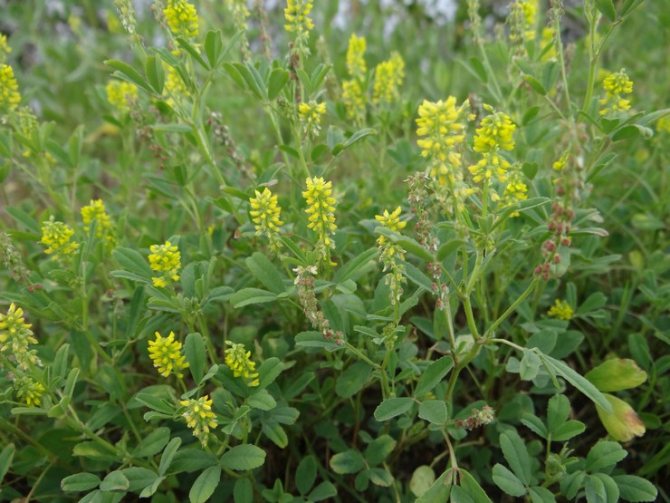

Planting and caring for a sweet clover is not difficult even for a novice gardener. The germination process takes about two weeks. When two strong leaves appear, the seedlings are thinned out, and the site is carefully loosened, removing weeds. Crops will develop well if the distance between individual bushes is at least 30 cm.
The plant is considered drought-resistant, but needs additional fertilizing with mineral fertilizers. Fruits are formed only in biennial plants, because young growth directs all forces to maximize the growth of the root system. It is important to ensure that the root collar does not flood when the snow melts. During flowering, the plant attracts bees, which flock to collect nectar.
Chemical composition
The content of useful chemical compounds in the plant is large. He has:
- proteins;
- trace elements;
- glycosides;
- tannins and resinous substances;
- organic acids;
- starch;
- choline;
- coumarin and its derivatives;
- flavonoids;
- saponins;
- vitamins B4 and E;
- carotene;
- tocopherol;
- essential oils.
A distinctive feature of sweet clover is a pronounced and persistent aroma of coumarin. It persists even in a dried plant.
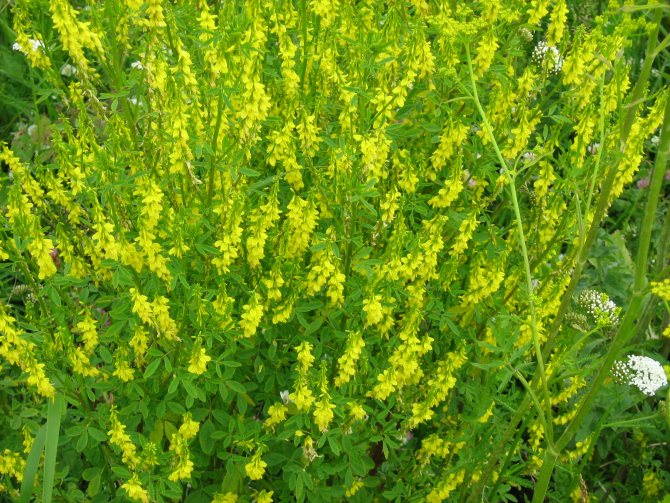

The medicinal plant has a rich composition of useful components
A variety of sweet clover
Donnik has more than 50 varieties. The most common varieties are yellow, white, and medicinal sweet clover.
In addition to the above, annual and perennial varieties of sweet clover were bred.
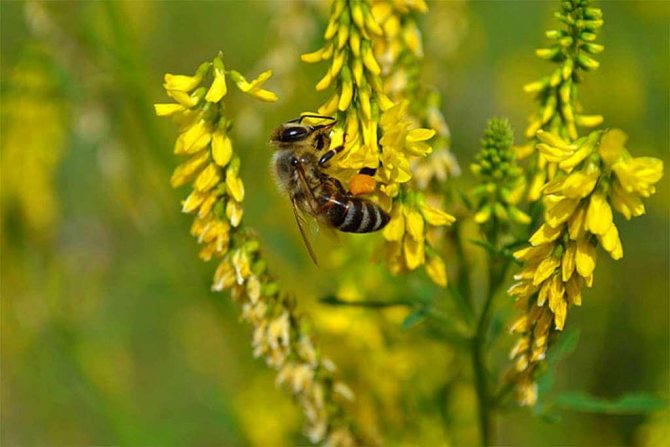

Yellow or medicinal sweet clover. It is a biennial plant that prefers the southern regions. Medicinal sweet clover is not afraid of drought, hardy and cold-resistant. Flowering begins in the summer, in the first decade, the flowers are yellow, densely planted in the inflorescence.
The culture is sown at a rate of about 120 grams per hundred square meters of arable land.
The plant's melliferousness is high, up to 320 kg can be obtained per hectare. honey, the average weight gain of the hive per day is 3.5 kg.
White sweet clover no less popular crop, the plant is not afraid of drought, is grown for silage and as a fodder base for livestock.
Flowering begins in summer, blooms later than its predecessor, but blooms longer, more than a month in time.
It is an excellent honey plant, gives an impressive amount of nectar, even in drought.
If the plant is grown as a fodder base for livestock, the agrotechnology of cultivation of sweet clover should be observed, and the condition of animals should be monitored, it is not uncommon for a white sweet clover, if stored improperly or prematurely to deteriorate, to cause mass mortality among cattle. The melliferousness of the culture exceeds 450 kg. per hectare, and the daily hive weight gain is about 4.5 kg.
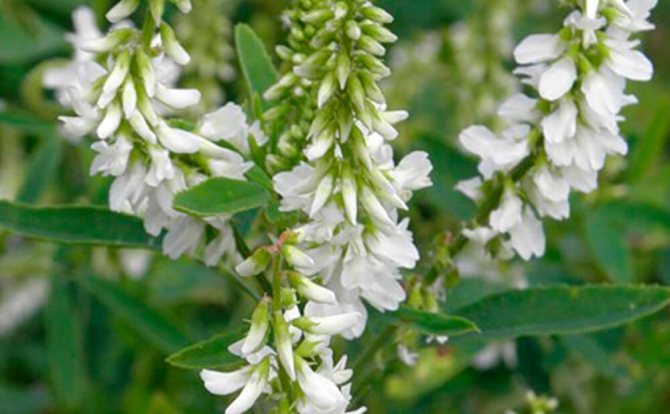

Annual sweet clover, blooms in the first year after sowing, in summer. In terms of honey content, it overtakes perennial varieties. It is grown for a variety of fodder ration for livestock and as a melliferous crop.
The plant is unpretentious and grows in almost all soils.
According to the reviews of both "industrialists" and gardeners, the most popular varieties among white sweet clover can be considered:
Perennial sweet clover variety Hoarfrost, Meshchersky, Stepnoy, Chermasan, Sayansky. The yellow varieties include Karabalyk, Omsk and Siberian sweet clover.
These varieties are resistant to insect attacks, unpretentious, fruitful. They are distinguished by early maturity (the period from sowing to harvesting can be as little as 60 days), high yield (up to 215 centners of green mass can be obtained per hectare), the varieties are unsurpassed melliferous plants and an excellent, nutritious, forage crop.
Blank
The raw material of the melilot is harvested in the flowering phase. Plants cut or tear off tender parts from it - flower brushes, tops with leaves and flowers and side shoots. Dried under a canopy, in attics, sent out on paper in a thin layer. The dried leaves should remain green, the flowers should be yellow, with a strong aroma and bitter taste. The healing properties persist for up to two years.
Sweet clover is also widely used as a food plant - for this purpose, young leaves, tops of inflorescences are collected, separating them from rough stems. They are used to prepare dressings for soups, okroshka, salads, compotes.
Fragrant greens of sweet clover give a pleasant taste to fish and meat dishes.
Melilot powder turns sour-milk snack cheese into a greenish color and gives it a pungent taste and aroma.
In industry, sweet clover is also used for flavoring tobacco, alcoholic beverages, and perfumery products.
Melilot is a good honey plant, so beekeepers tend to breed it near apiaries. This very unpretentious plant takes root well on poorly suitable lands, wastelands, along the slopes of ravines. It is estimated that from 1 hectare of the area occupied by sweet clover, bees give from 200 to 600 kg of honey. In recent years, breeders have developed new varieties of sweet clover, which are a valuable forage plant.
Melilot is a herbaceous biennial of the Legume family. Found on all continents, but most common in Eurasia.The plant is popularly known under the names "sweet clover", "burkun", "sleepy grass", "hare chill", "soapy grass", "stable". Although it is impossible to call sweet clover exclusively decorative, it is of great benefit to the site and to the person, and is also an excellent honey plant. Thanks to this, it is worth sowing it on the site at least once every few years.
Methods of preparation and use of sweet clover
What is the use of sweet clover at home? Decoctions, infusions, ointments are prepared from the herb. It is also used in cooking, and sweet clover honey is one of the highest quality varieties of honey.
Decoction
The herb can be brewed separately. It is also often included in the fees that are used to treat abscesses. It is a good emollient, anti-inflammatory, expectorant. It is taken for varicose veins, insomnia, respiratory diseases.
Preparation
- Take 1 tbsp. spoonful of herbs.
- Pour a glass of boiling water over.
- Boil for 1 minute.
- Insist 1 hour.
- Strain.
Broths are taken orally in 1 tbsp. spoon after meals 3 times a day. Used externally in the form of lotions and compresses.
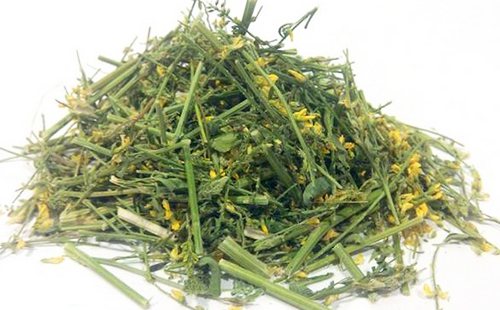

Infusion
There are several recipes for infusions. Copper infusions are recommended to be applied externally.
Cooking a weak infusion
- Take 1 tsp. herbs.
- Pour a glass of boiling water over.
- Insist 40 minutes.
- Strain.
Warm infusion is taken orally ¼ cup 3 times a day. Good for insomnia and nervous disorders.
Preparation of concentrated infusion
- Take 1 tbsp. l. herbs.
- Pour a glass of boiling water over.
- Insist 2 hours.
- Strain.
This infusion can be taken in 1 tbsp. l. 3 times a day.
In gynecology, infusions are taken orally, they are also used externally in the form of douching, tampons, baths. Concentrated infusions are added to therapeutic baths for joint diseases.
Ointment
The ointment is prepared on the basis of fat - melted pork, duck, goose, butter or petroleum jelly. It can be used for mastitis, diseases of the blood vessels and joints, for bruises, bruises, abscesses, for the ripening of boils.
Preparation
- Take 1 tbsp. l. herbs.
- Mix with ¼ cup duck fat.
- Bring the mixture to a boil.
- Insist until cool.
The ointment is applied to a napkin and applied to the affected skin area or sore spot.


Features of use for varicose veins
Treatment of varicose veins is a long and complex process. It is important to include a proper diet and drinking regimen, gymnastics, massage. An important role is influenced by the patient's lifestyle, age, occupation. There are positive reviews about the treatment of yellow melilot with the threat of blood clots. Varicose veins are also treated with other herbal remedies: horse chestnut, figs, hare cabbage, hops, thistle, comfrey, milk thistle, Kalanchoe, goat's rue, lungwort, asparagus.
How to prepare a decoction for vein treatment
- Take 1 tbsp. l. dry grass.
- Pour 2 cups of warm water (not boiling water!).
- Insist 4 hours.
- Strain.
How to use herbal for veins? Drink 1 dessert spoon 3 times a day before meals. Doctors recommend taking this herb together with other herbs.
How to prepare herbal remedy for vein treatment
- Take 2 parts each of milk thistle herb, hazel leaves.
- Add 1 part each of melilot grass and prickly steel.
- Mix and take 1 tbsp. collection spoon.
- Pour in 1.5 cups of water.
- Boil for 10 minutes and leave for 1 hour.
Take a collection of ¼ glass 3 times before meals.
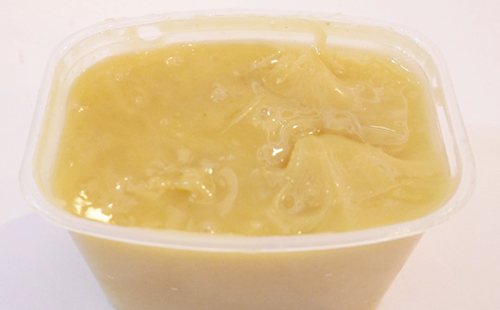

Melilot honey
Melilot exudes a lot of nectar. Due to the unique structure of the flower, nectar does not evaporate in hot weather, and is not washed off by rain. This honey plant is grown industrially to obtain valuable melilot honey. The greatest honey productivity is given by annual and white sweet clover. Melilot honey is not only a useful delicacy, but also a valuable medicine.It is used externally for mastitis, abscesses, tumors, pain in muscles and joints. Inside take for cough, hypertension, indigestion, headaches, fatigue, neurosis. Read more about the beneficial properties of melilot honey in our other article.
Cooking
Among the Slavic peoples, sweet clover is not such a well-known herb in cooking. However, among southerners and Caucasian peoples, this is a popular seasoning for fish and meat dishes. Fresh, dry leaves and flowers are salted, preserved, salads and soups are prepared from them, they are added to homemade cheeses and liqueurs. As a seasoning, sweet clover should be used sparingly, as its excess in the diet can cause side effects.
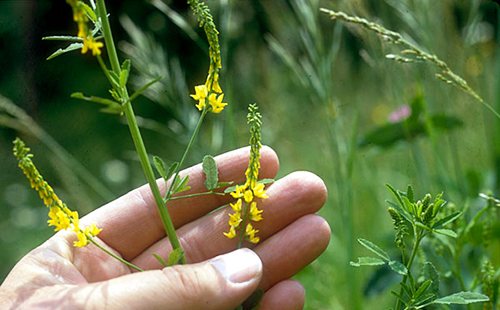

Side effects
Melilotus officinalis is a poisonous plant. Overdose and uncontrolled intake lead to severe side effects:
- dizziness;
- drowsiness;
- headache;
- nausea and vomiting;
- hemorrhage;
- paralysis.
What is important to know?
- Do not increase the dosage of the herb.
- Do not give to children.
- If you experience any side effects, consult a doctor immediately.
- White sweet clover is considered more toxic, so it is much less commonly used as a medicine.
Melilotus officinalis is the first remedy for varicose veins and hemorrhoids. Also, the herb is effective for cramps, agitation of the nervous system, insomnia. It is an effective distracting, analgesic and anti-inflammatory agent for mastitis, rheumatism, gout. Ointments, compresses are made from it and applied to sore spots.
Planting a sweet clover in the open field
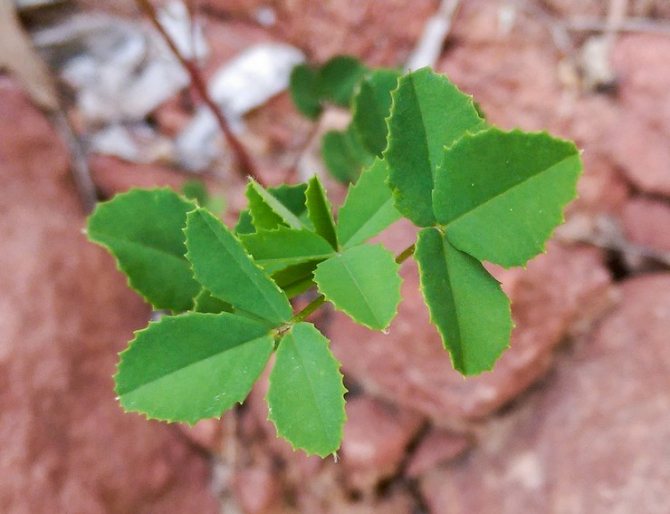

Yellow sweet clover and white sweet clover are suitable for cultivation. These species are propagated in a generative way. The soil for planting can be completely different. Both salt marshes and chernozems or low-podzolic soils are suitable. The grass reacts poorly to an acidic and boggy substrate in places where groundwater lies close to the surface. The plant has the ability to absorb nitrogen and absorb the required amount of nutrients from solid soil, so the cultivated plantings of sweet clover can also grow on marginal soil. An important point when cultivating bottom grass is good illumination of the area.
Before sending the seeds into the ground, the site is thoroughly plowed, at the same time enriching it with granules of potash and phosphorus fertilizers.
Melilot seeds must be stratified before sowing. It is allowed to use clover graters or scarifiers for these purposes, if available. Sowing of the culture is carried out in April. Narrow furrows are dug, the soil is moistened. Seeds are distributed from each other at a distance of 45 cm. They cover the top with a small layer of earth and lightly slap the surface.
If the seeds cannot be stratified, they are sown in the soil in winter. Due to the moisture of melt water and rains, the seed coat will soften. The first shoots will begin to appear with the arrival of spring warmth. In the south, sweet clover is planted in open ground at the end of summer.
Cooking applications
In cooking, wild buckwheat is used as a seasoning for soups, fish dishes, and is also added to vegetable salads and tea. You need to take no more than 1-2 pinches of crushed dry grass and remember that the plant in large quantities exhibits toxic properties.
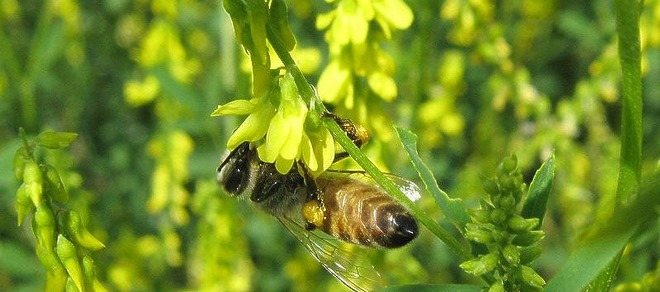

the plant is an excellent raw material for obtaining medicinal honey
Melilot honey
Beekeepers are sowing fields not only with bottom grass. There is one more active honey plant - sweet clover, which exhibits the same healing properties as the medicinal species.
Honey helps with colds, strengthens the immune system, has a hypotensive effect, improves the functioning of the cardiovascular system. Eases headaches, reduces shortness of breath.
Pharmaceuticals
- Medicinal sweet clover. Dry herbal raw materials with a wide range of applications for the preparation of various dosage forms.Refers to a group of drugs with anti-inflammatory activity.
- It is part of Kardiofit - a combined cardiological drug prescribed for functional cardiovascular disorders. Has mild hypotensive, cardiotonic and antiarrhythmic effects.
- It is part of a series of products for maintaining the vessels of the legs - Venokorset produced by "Evalar" (capsules, gel, drainage).
In addition, the plant is part of various herbal preparations.
What does medicinal sweet clover look like?
There is nothing superfluous in nature. Each blade of grass has its own purpose, one of which is to help a person. Often passing along field roads, resting at the edge of the forest, and just on the sides of country roads, you can find an interesting plant. Its small trefoil leaves create a lace pattern, and elongated brushes with small yellow drooping flowers stretch towards the sun. This is a sweet clover from the legume family.
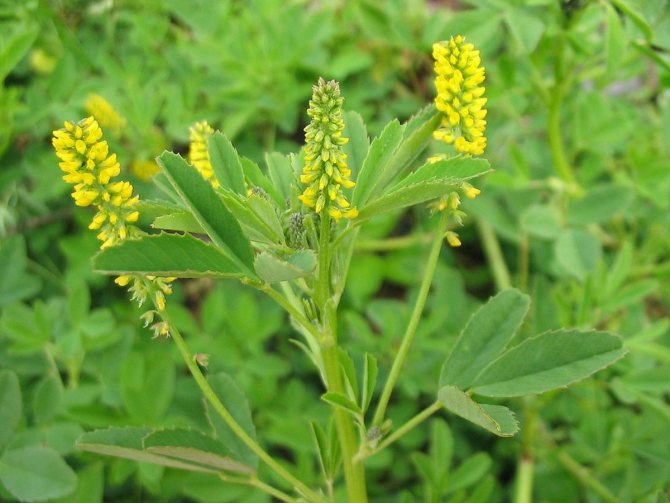

The medicinal sweet clover (Melilotus officinalis
) flower petals are yellow. This species is less known than other medicinal herbs, but it is, in fact, an interesting plant, known, as they say, before the Slavic period. Therefore, we will briefly decipher why sweet clover is called three in one. The Latin name for sweet clover - Melilotus comes from the Greek words μελί - "honey" and λοτος - "fodder grass", and Russian - from the old name of the disease "bottom", in modern terms - gout.
Donnik combines the following qualities:
- a good helper in a home medicine cabinet for many diseases of various etiologies;
- excellent honey plant; sweet clover honey has a delicate aroma reminiscent of vanilla, contains up to 40% fructose;
- sweet clover is fed to cattle, however, only in the form of hay mixed with other herbs; using such hay, you need to be careful: if the hay contains yellow sweet clover and is rotten, the cattle can be poisoned with dicoumarin;
- sweet clover - a good natural soil improver (green manure); its deeply penetrating roots not only loosen the soil, but also fill it with organic matter with a high content of elements and compounds necessary for plants.
Melilot yellow is used in folk and official medicine as a remedy. But it belongs to the group of poisonous plants. Do not self-medicate. Use his preparations only after consulting a phytotherapist.
To boost the immune system
The use of sweet clover honey during epidemics of influenza and acute respiratory viral infections will help strengthen the protective functions of the body. White melilot honey has the ability to stimulate the immune forces, which helps to quickly cope with the disease. To achieve the desired effect, it is enough to eat only 25 grams of a fragrant delicacy per day. For children, this dosage is reduced to 10-15 grams, since this is an allergenic product.
You need to know that the immunomodulatory effect does not depend on the amount of food eaten. So don't overeat it in the hopes of getting more benefits.
Donnik is a honey plant
All summer bees collect pollen from this plant. Miracle honey sweet clover tones the human body, supplies energy for the whole day. It is consumed internally and externally. Honey has a diuretic, antispasmodic and analgesic effect. Used for respiratory diseases, it relieves painful sensations and relieves inflammation. For people who suffer from hypertension or heart disease, it is enough to consume honey a couple of times a week, after which their well-being will noticeably improve.


This miracle medicine can normalize the condition of a person who has suffered a serious illness, relieve him of dizziness, shortness of breath and headaches. Honey is also useful for nursing mothers, as it stimulates an increase in lactation. Due to its unique beneficial properties, it is used for a variety of diseases. This medicine smells very good and also has a very delicate taste.Experts say that it is useful to regularly use such a delicacy even for a healthy person.
Sweet clover harvesting, drying, storage
Procurement of raw materials. The raw material is harvested during the flowering period (June - September). Cut off the top (25-30 cm) herbaceous green flowering shoots. Rough stems with yellowed leaves are not used. Cutting is always carried out after the dew has melted, preferably from 9 to 12 hours and after 16 hours of the day.
Drying. For drying, the cut material can be used:
- in the form of loose bundles suspended from a crossbar or wire;
- spreading out a 5-7 cm layer on burlap or moisture-absorbing paper; during drying, the material is constantly agitated.
When drying the sweet clover, good ventilation is required (canopy, attic, herbal dryer) and the temperature is not higher than + 30 ... + 35 ° С.
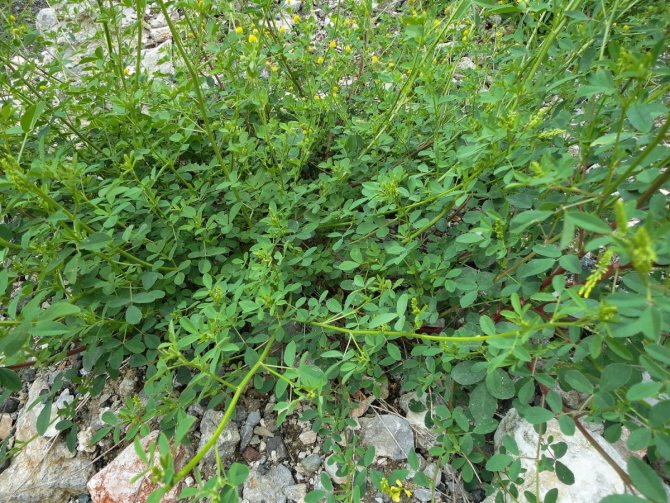

General view of the plant sweet clover
Storage
A properly dried sweet clover has a pleasant smell of fresh hay, a bitter-salty taste. The stems break easily. Leaves should not crumble. Their crumbling indicates dryness of the material.
Dried raw materials are stored in a hermetically sealed container. Medicinal raw materials are stored for no more than 2 years.
If sweet clover is yellow (like a medicinal herb) that has caught your attention, you can use it in home treatments for certain conditions. But I want to repeat once again - be careful! Large doses, long-term indiscriminate intake do not contribute to recovery, but will only worsen your condition.


Medicinal melilot [Melilotus officinalis (L.) Desr.] This large annual or biennial herb, shrub or shrub, reaching a height of 100 cm, belongs to the legume family.
Other names: yellow sweet clover, sticky, burkun, moth grass
Distinctive features of the species:
stem - single, rough, ribbed, strongly branched;
the leaves are small, alternate, the lower ones are trifoliate, obovate, the rest are oblong, lanceolate, with denticles along the edges, fixed on a long petiole that turns into the petiole of the middle leaf, two lateral leaves are almost sessile;
flowers - small, moth, bright yellow, collected in elongated brushes, drooping bells downward, on the length of the peduncle, are distinguished by a strong aroma;
fruits - in the form of an ovoid bean with transverse folds 3 ... 4 mm long, with one or two greenish-yellow seeds.
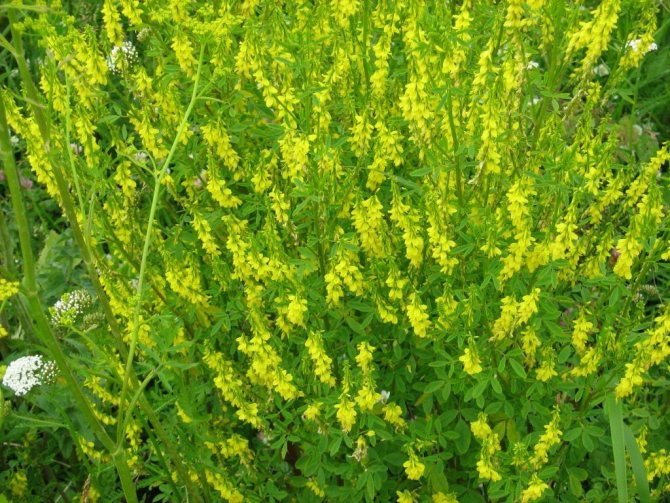

Blooms June to August; fruits ripen in August-September.
Is growing in meadows, on the slopes of ravines, along roads, in weedy places, does not require maintenance.

